Tardive dyskinesia side effects. Understanding Tardive Dyskinesia: Causes, Symptoms, and Treatment Options
What are the main symptoms of tardive dyskinesia. How is tardive dyskinesia diagnosed. What treatments are available for managing tardive dyskinesia. Who is at higher risk of developing tardive dyskinesia. Can tardive dyskinesia be prevented.
What is Tardive Dyskinesia and How Does it Develop?
Tardive dyskinesia (TD) is a neurological disorder characterized by involuntary, repetitive body movements. It’s primarily a side effect of long-term use of antipsychotic medications, which are commonly prescribed to treat schizophrenia, bipolar disorder, and other mental health conditions.
TD develops when antipsychotic drugs block dopamine receptors in the brain for extended periods. Dopamine is a neurotransmitter crucial for smooth, controlled muscle movements. The prolonged blockage of dopamine receptors can lead to a hypersensitivity in the brain’s dopamine system, resulting in the involuntary movements characteristic of TD.

While TD typically occurs after months or years of antipsychotic use, in rare cases, it can develop after a single dose. The risk of TD increases with the duration of antipsychotic treatment and is generally higher with first-generation (typical) antipsychotics compared to second-generation (atypical) antipsychotics.
Recognizing the Symptoms of Tardive Dyskinesia
TD manifests through a variety of involuntary movements, which can range from mild to severe and may affect different parts of the body. The most common symptoms include:
- Orofacial dyskinesia: Movements of the face, lips, tongue, and jaw
- Grimacing or frowning
- Rapid blinking
- Lip smacking or puckering
- Tongue protrusion
- Chewing motions
- Limb dyskinesia: Movements of arms, legs, fingers, and toes
- Finger wiggling or piano-playing motions
- Foot tapping or leg swinging
- Arm flapping or swaying
- Pelvic thrusting
These movements can be fast or slow and may interfere with daily activities, work, and social interactions. In some cases, TD can also affect the muscles of the diaphragm and chest, leading to irregular breathing patterns or grunting sounds.

Risk Factors for Developing Tardive Dyskinesia
While anyone taking antipsychotic medications can potentially develop TD, certain factors increase the risk:
- Age: Individuals over 55 are at higher risk
- Gender: Postmenopausal women have an increased risk
- Ethnicity: African Americans and Asian Americans may be more susceptible
- Substance abuse: Alcohol or drug abuse can increase the likelihood of TD
- Medication type and duration: Longer use of antipsychotics, especially first-generation drugs, elevates the risk
- Pre-existing brain injuries or diabetes
Are certain mental health conditions associated with a higher risk of TD? Some studies suggest that individuals with mood disorders or cognitive impairments may be more prone to developing TD when taking antipsychotics. However, more research is needed to fully understand this relationship.
Diagnosing Tardive Dyskinesia: Challenges and Approaches
Diagnosing TD can be challenging due to its gradual onset and potential similarity to symptoms of other movement disorders. Physicians typically use a combination of clinical observation, patient history, and specialized assessment tools to diagnose TD.
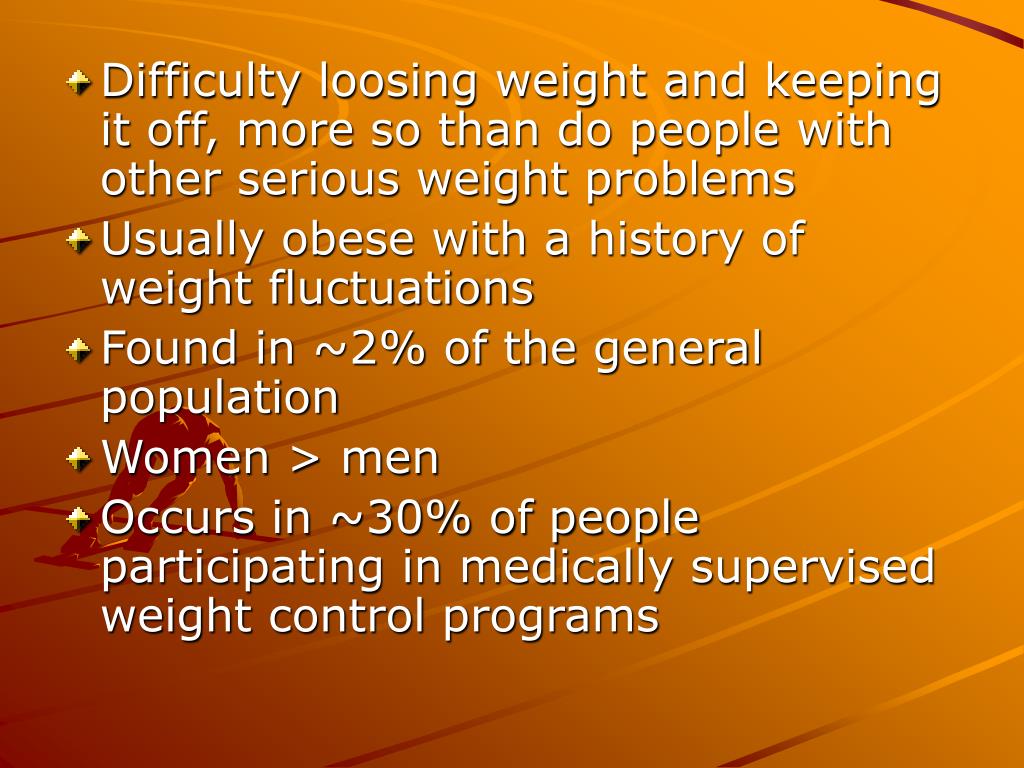
The Abnormal Involuntary Movement Scale (AIMS)
The primary diagnostic tool for TD is the Abnormal Involuntary Movement Scale (AIMS). This standardized assessment involves a physical examination where a healthcare provider observes and rates the severity of abnormal movements in different body regions. The AIMS test typically includes:
- Evaluation of facial and oral movements
- Assessment of extremity and truncal movements
- Patient’s awareness of the movements
- Overall severity rating
How often should patients on antipsychotics be screened for TD? Clinical guidelines recommend that patients taking antipsychotic medications should undergo AIMS testing at least annually, with more frequent screenings for high-risk individuals.
Differential Diagnosis
To ensure accurate diagnosis, doctors must rule out other conditions that can cause similar movement disorders, such as:
- Parkinson’s disease
- Huntington’s disease
- Wilson’s disease
- Stroke-related movement disorders
- Drug-induced parkinsonism
Additional tests may be necessary to exclude these conditions, including:
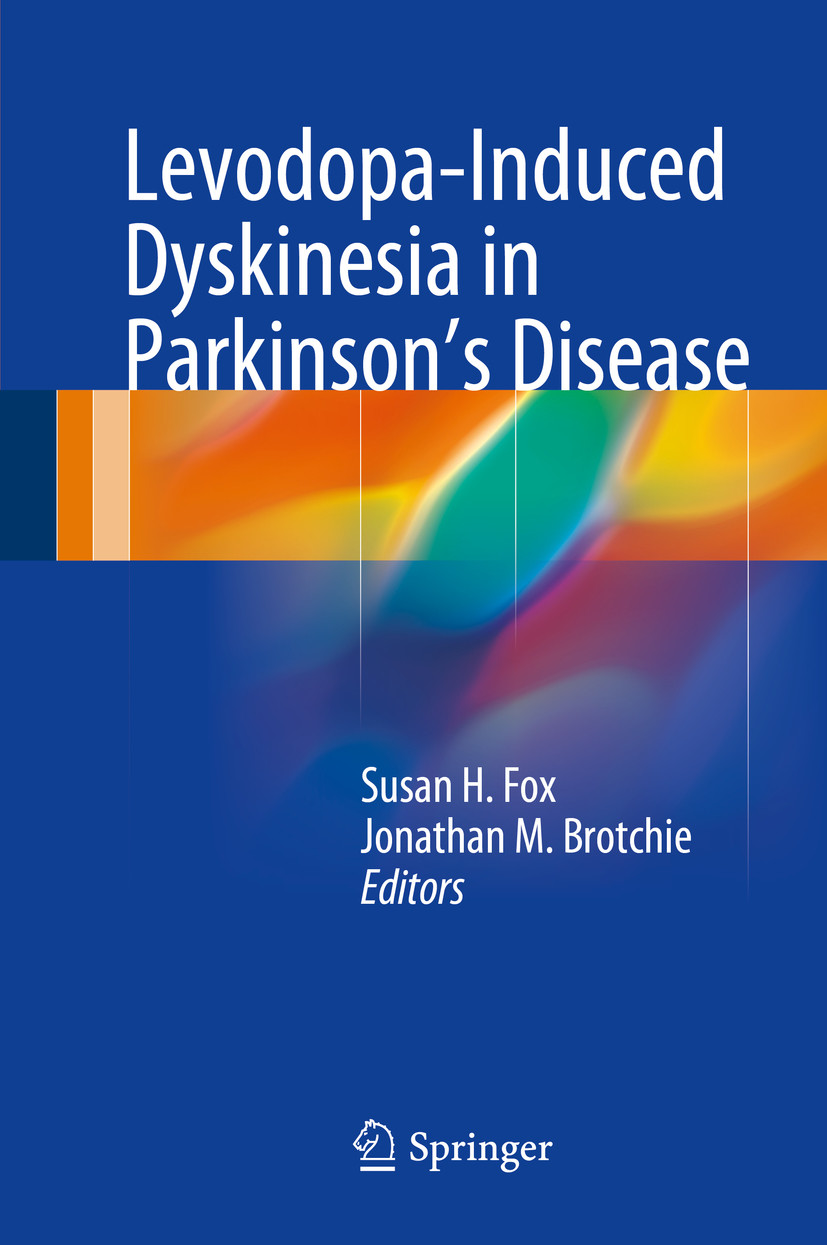
- Blood tests to check for metabolic or genetic disorders
- Brain imaging (CT or MRI scans) to rule out structural abnormalities
- Dopamine transporter (DAT) scans to differentiate TD from Parkinson’s disease
Treatment Strategies for Tardive Dyskinesia
Managing TD involves a multifaceted approach, focusing on both symptom relief and addressing the underlying cause. Treatment strategies may include:
Medication Adjustments
The first step in treating TD often involves modifying the antipsychotic medication regimen:
- Dose reduction: Lowering the dose of the causative medication may help alleviate symptoms
- Medication switch: Changing to a different antipsychotic with a lower risk of TD
- Gradual discontinuation: In some cases, slowly tapering off the medication may be considered, but this must be done carefully to avoid relapse of the primary psychiatric condition
FDA-Approved Medications for TD
Two medications have been specifically approved by the FDA for the treatment of TD:

- Valbenazine (Ingrezza): A selective vesicular monoamine transporter 2 (VMAT2) inhibitor
- Deutetrabenazine (Austedo): Another VMAT2 inhibitor, structurally related to tetrabenazine
Both these medications work by regulating dopamine levels in the brain, helping to control involuntary movements. They have shown significant efficacy in reducing TD symptoms in clinical trials.
What are the potential side effects of these TD medications? Common side effects may include drowsiness, fatigue, and nausea. Austedo has also been associated with an increased risk of depression in patients with Huntington’s disease.
Off-Label Treatments
Several other medications have been used off-label to treat TD, although their efficacy is less well-established:
- Clonazepam: A benzodiazepine that may help reduce TD symptoms in some patients
- Amantadine: An antiviral medication with dopaminergic effects
- Ginkgo biloba: An herbal supplement with potential antioxidant properties
- Branched-chain amino acids: May help in some cases, though more research is needed
It’s crucial to consult with a healthcare provider before trying any off-label or supplemental treatments for TD.

Preventing Tardive Dyskinesia: Proactive Measures
While not always preventable, several strategies can help reduce the risk of developing TD:
- Careful medication selection: Using the lowest effective dose of antipsychotics and opting for newer, atypical antipsychotics when possible
- Regular monitoring: Conducting frequent AIMS assessments to detect early signs of TD
- Patient education: Informing patients about the risks and symptoms of TD to ensure early reporting of any unusual movements
- Considering alternative treatments: Exploring non-pharmacological options for managing psychiatric symptoms when appropriate
- Addressing modifiable risk factors: Managing concurrent health conditions and avoiding substance abuse
Can lifestyle modifications help prevent or manage TD? While not a substitute for medical treatment, maintaining a healthy lifestyle through regular exercise, stress reduction techniques, and a balanced diet may support overall neurological health and potentially complement TD management strategies.
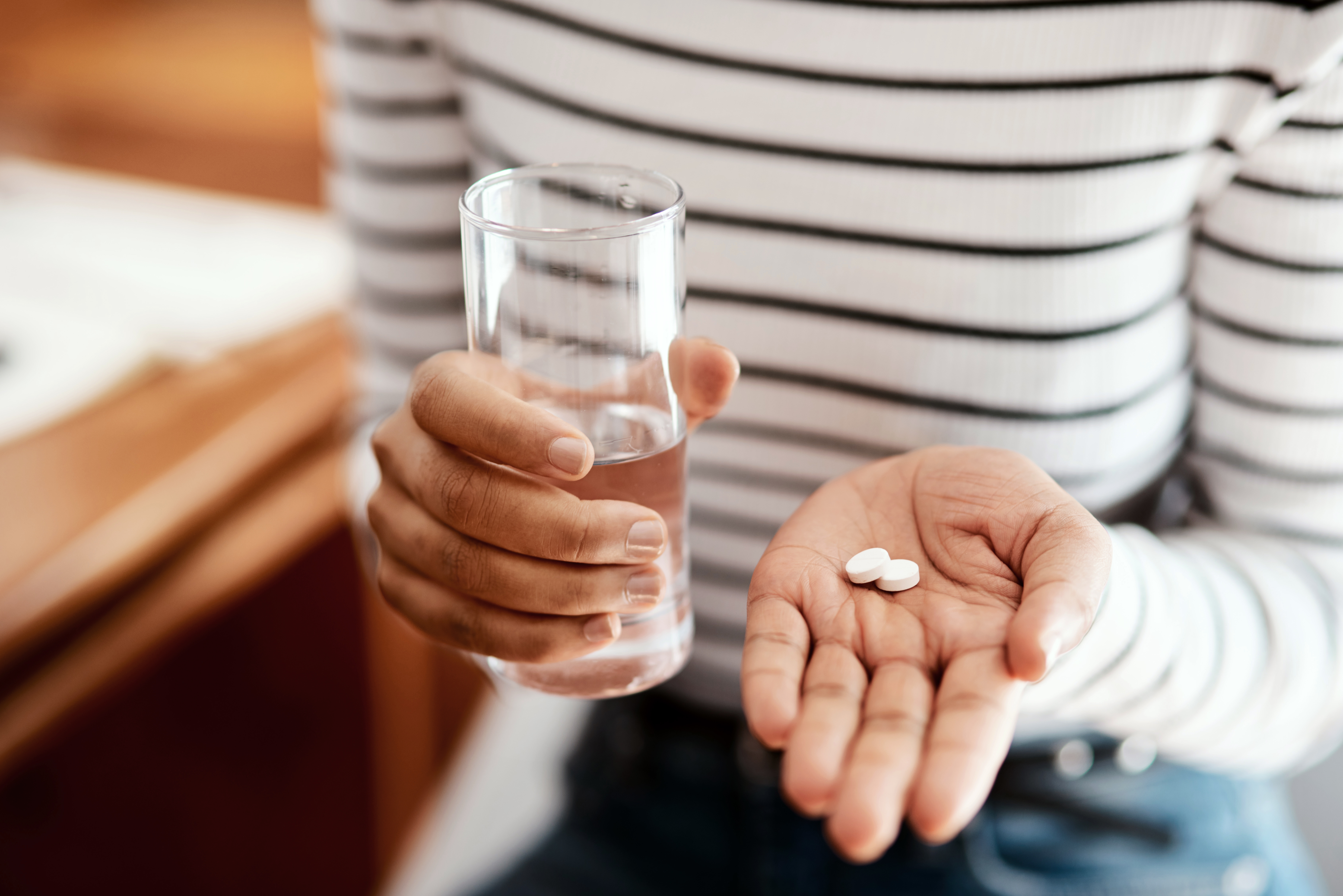
Living with Tardive Dyskinesia: Coping Strategies and Support
TD can significantly impact a person’s quality of life, affecting both physical functioning and emotional well-being. Developing effective coping strategies is crucial for individuals living with TD:
Psychological Support
The emotional impact of TD can be significant, potentially leading to anxiety, depression, and social isolation. Professional psychological support can be beneficial:
- Cognitive-behavioral therapy (CBT) to develop coping mechanisms
- Support groups for individuals with TD to share experiences and strategies
- Mindfulness and relaxation techniques to manage stress and anxiety associated with TD symptoms
Adaptive Strategies
Practical adaptations can help manage the physical challenges of TD:
- Using adaptive devices to assist with daily tasks affected by involuntary movements
- Exploring occupational therapy to improve function and independence
- Implementing speech therapy techniques if TD affects speech or swallowing
Social Support and Education
Educating family, friends, and colleagues about TD can foster understanding and support:

- Providing information about the involuntary nature of TD movements
- Discussing ways others can offer practical and emotional support
- Advocating for workplace accommodations if TD affects job performance
How can caregivers best support individuals with TD? Caregivers can play a crucial role by assisting with medication management, attending medical appointments, providing emotional support, and helping to create a safe and comfortable environment that accommodates the challenges of TD.
Future Directions in Tardive Dyskinesia Research and Treatment
The field of TD research is dynamic, with ongoing efforts to improve understanding, diagnosis, and treatment of this condition:
Emerging Therapies
Several promising avenues for TD treatment are under investigation:
- Novel VMAT2 inhibitors with potentially improved efficacy or side effect profiles
- Gene therapy approaches targeting dopamine regulation
- Neuromodulation techniques, such as transcranial magnetic stimulation (TMS)
- Personalized medicine strategies to predict TD risk and optimize treatment
Improved Diagnostic Tools
Researchers are working on developing more sensitive and objective methods for diagnosing TD:

- Advanced neuroimaging techniques to detect early brain changes associated with TD
- Wearable technology for continuous monitoring of movement patterns
- Artificial intelligence algorithms to analyze movement data and assist in diagnosis
Neuroprotective Strategies
Investigations into neuroprotective approaches aim to prevent or mitigate the development of TD:
- Antioxidant therapies to reduce oxidative stress in the brain
- Neurotrophic factors to support neuronal health and plasticity
- Anti-inflammatory interventions to modulate neuroinflammation associated with TD
What role might precision medicine play in the future of TD management? As our understanding of the genetic and molecular basis of TD improves, tailored approaches based on individual patient characteristics may lead to more effective prevention and treatment strategies, potentially revolutionizing TD care.
In conclusion, tardive dyskinesia presents significant challenges for both patients and healthcare providers. However, with ongoing research, improved diagnostic tools, and emerging treatment options, the outlook for individuals with TD continues to improve. By combining medical interventions with comprehensive support strategies, many people with TD can effectively manage their symptoms and maintain a good quality of life. As research progresses, the hope is that future developments will lead to even better outcomes, potentially even preventing TD before it develops.

Tardive Dyskinesia: Definition, Symptoms, Causes, Treatment
Tardive dyskinesia is a side effect of antipsychotic medications. These drugs are used to treat schizophrenia and other mental health disorders.
TD causes stiff, jerky movements of your face and body that you can’t control. You might blink your eyes, stick out your tongue, or wave your arms without meaning to do so.
Not everyone who takes an antipsychotic drug will get it. But if it happens, it’s sometimes permanent. So if you have movements you can’t control, let your doctor know right away. To ease your symptoms, your doctor may:
- Lower the dose
- Add another medication to what you’re taking to act as an antidote
- Switch you to a different drug
Symptoms
Tardive dyskinesia causes stiff, jerky movements that you can’t control. They include:
Orofacial dyskinesia or oro-bucco-lingual dyskinesia: Uncontrolled movements in your face — namely your lips, jaw, or tongue. You might:
You might:
- Stick out your tongue without trying
- Blink your eyes fast
- Chew
- Smack or pucker your lips
- Puff out your cheeks
- Frown
- Grunt
Dyskinesia of the limbs: It can also affect your arms, legs, fingers, and toes. That can cause you to:
- Wiggle your fingers
- Tap your feet
- Flap your arms
- Thrust out your pelvis
- Sway from side to side
These movements can be fast or slow. You may find it hard to work and stay active.
Causes and Risk Factors
Antipsychotic meds treat schizophrenia, bipolar disorder, and other brain conditions. Doctors also call them neuroleptic drugs.
They block a brain chemical called dopamine. It helps cells talk to each other and makes the muscles move smoothly. When you have too little of it, your movements can become jerky and out of control.
You can get TD if you take an antipsychotic drug. Usually you have to be on it for 3 months or more.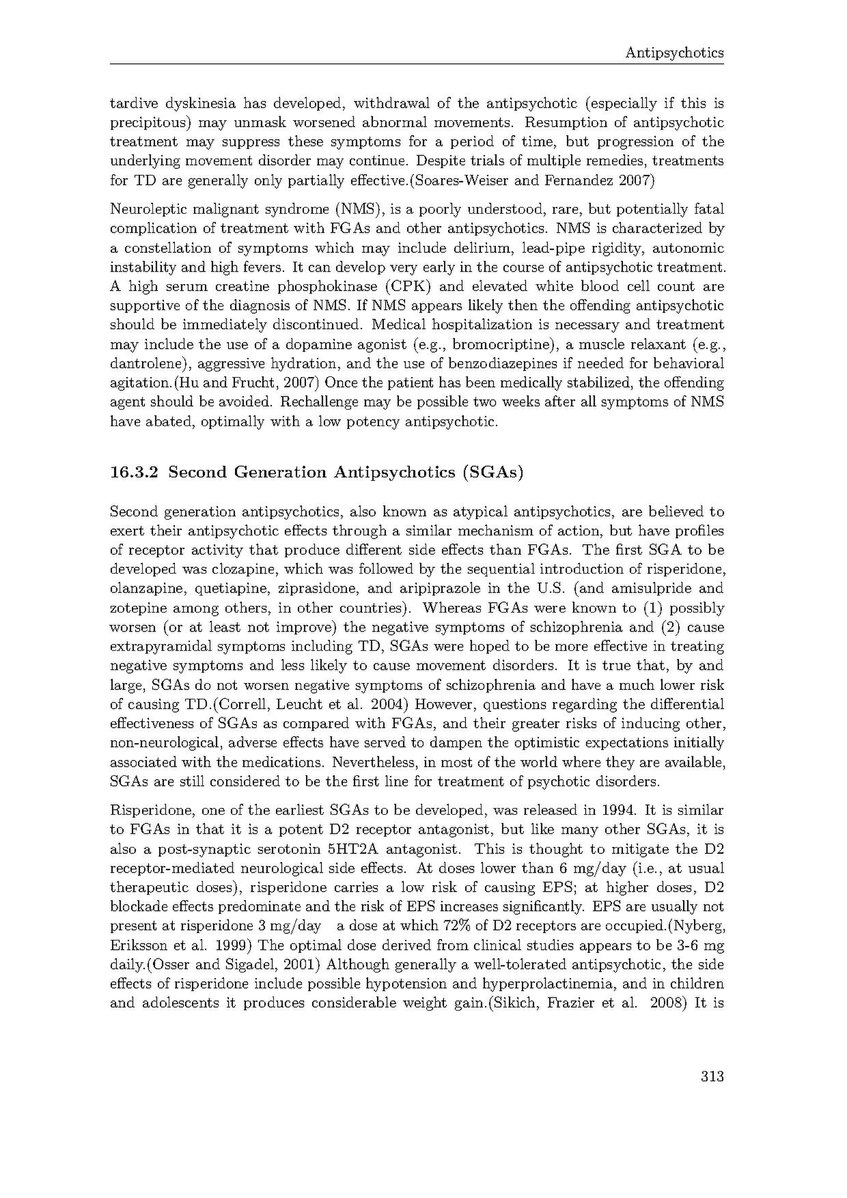 But there have been rare cases of it after a single dose of an antipsychotic medicine. Older versions of these drugs are more likely to cause this problem than newer ones. Some studies find a similar risk from both types, though.
But there have been rare cases of it after a single dose of an antipsychotic medicine. Older versions of these drugs are more likely to cause this problem than newer ones. Some studies find a similar risk from both types, though.
Antipsychotic medications that can cause tardive dyskinesia include antipsychotics like:
- Haloperidol (Haldol)
- Fluphenazine
- Risperidone (Risperdal)
- Olanzapine (Zyprexa)
Your chances of getting TD go up the longer you take an antipsychotic medicine.
Some drugs that treat nausea, reflux, and other stomach problems can also cause TD if you take them for more than 3 months. These include:
You’re more likely to get it if you:
- Are a woman who has gone through menopause
- Are over age 55
- Abuse alcohol or drugs
- Are African American or Asian American
Diagnosis
TD can be hard to diagnose. Symptoms might not appear until months or years after you start taking antipsychotic medicine.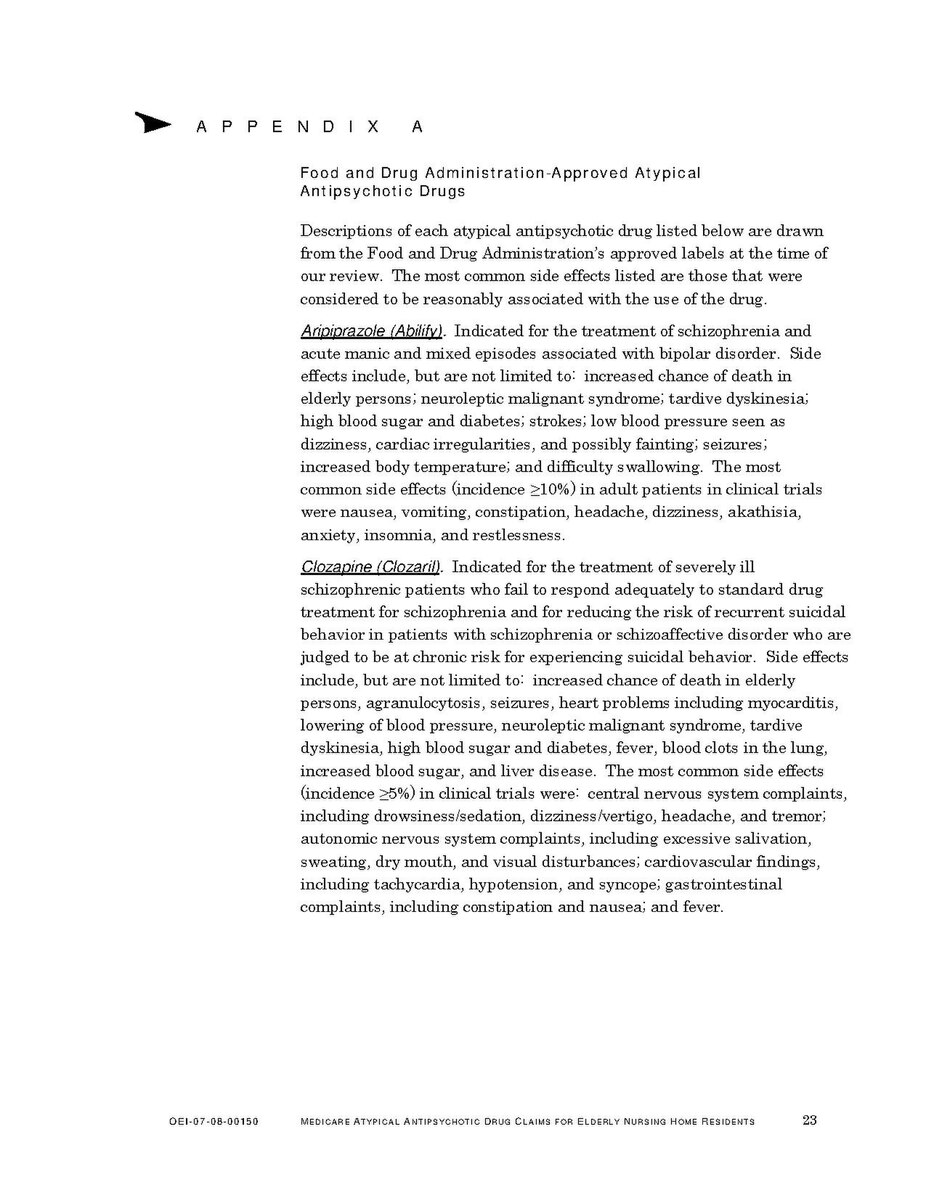 Or you might first notice the movements after you’ve already stopped taking the drug. The timing can make it hard to know whether the medicine caused your symptoms.
Or you might first notice the movements after you’ve already stopped taking the drug. The timing can make it hard to know whether the medicine caused your symptoms.
Abnormal Involuntary Movement Scale (AIMS): If you take medicine for mental health conditions, your doctor should check you at least once a year to make sure you don’t have TD. They can give you a physical exam called the Abnormal Involuntary Movement Scale, which will help them rate any abnormal movements.
They can also do tests to find out whether you have another disorder that causes abnormal movements, like:
To rule out these conditions, you may get:
- Blood tests
- Imaging scans of the brain, such as a CT or MRI scan
Treatment and Prevention
The goal is to prevent TD. When your doctor prescribes a new drug to treat a mental health disorder, ask about its side effects. The benefits of the drug should outweigh the risks.
If you have movement problems, tell your doctor but don’t stop taking the drug on your own.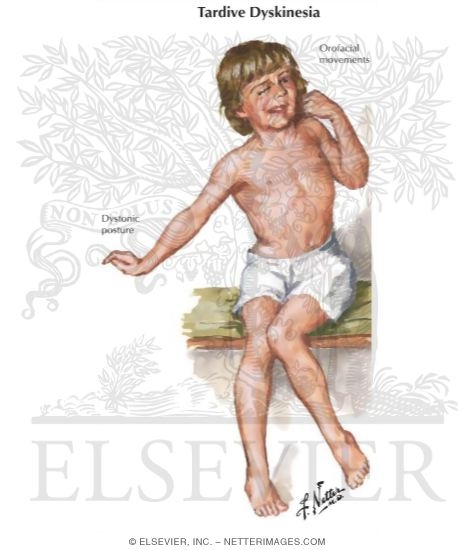 Your doctor can take you off the medicine that caused the movements, or lower the dose.
Your doctor can take you off the medicine that caused the movements, or lower the dose.
You might need to switch to a newer antipsychotic drug that may be less likely to cause TD.
There are two FDA-approved medicines to treat tardive dyskinesia:
Both of these medicines work in similar ways to regulate the amount of dopamine flow in brain areas that control certain kinds of movements. Both can sometimes cause drowsiness. Austedo also has been shown to sometimes cause depression when used in patients with Huntington’s disease.
There’s no proof that natural remedies can treat it, but some might help with movements:
Talk to your doctor before you take any supplements for your symptoms.
Austedo oral: Uses, Side Effects, Interactions, Pictures, Warnings & Dosing
See also Warning section.
Drowsiness, trouble sleeping, tiredness, dizziness, nausea, and vomiting may occur. If any of these effects last or get worse, tell your doctor or pharmacist promptly. Your doctor may need to adjust your dose to reduce these side effects.
Your doctor may need to adjust your dose to reduce these side effects.
To reduce the risk of dizziness and lightheadedness, get up slowly when rising from a sitting or lying position.
Remember that your doctor has prescribed this medication because he or she has judged that the benefit to you is greater than the risk of side effects. Many people using this medication do not have serious side effects.
Tell your doctor right away if you have any serious side effects, including: agitation/restlessness, Parkinson’s disease symptoms (such as shaking/tremors, slowed movement, loss of balance).
Sometimes deutetrabenazine can cause side effects that are similar to the symptoms of worsening Huntington’s disease. Your doctor may need to adjust your dose to see if these side effects are due to the drug or to the disease. Tell your doctor right away if any of these serious side effects occur: mental/mood changes (such as new/worsening depression, suicidal thoughts/attempts, problems with thinking), trouble swallowing, uncontrolled muscle movements of the face (such as lip smacking, unusual tongue movements), signs of increased prolactin hormone (such as enlarged breasts, abnormal breast milk production, decreased sexual ability, a change in menstrual cycle).
This medication may rarely cause a very serious condition called neuroleptic malignant syndrome (NMS). Get medical help right away if you have any of the following symptoms: fever, muscle stiffness/pain/tenderness/weakness, severe tiredness, severe confusion, sweating, fast/irregular heartbeat, dark urine, signs of kidney problems (such as change in the amount of urine).
A very serious allergic reaction to this drug is rare. However, get medical help right away if you notice any symptoms of a serious allergic reaction, including: rash, itching/swelling (especially of the face/tongue/throat), severe dizziness, trouble breathing.
This is not a complete list of possible side effects. If you notice other effects not listed above, contact your doctor or pharmacist.
In the US –
Call your doctor for medical advice about side effects. You may report side effects to FDA at 1-800-FDA-1088 or at www.fda.gov/medwatch.
In Canada – Call your doctor for medical advice about side effects.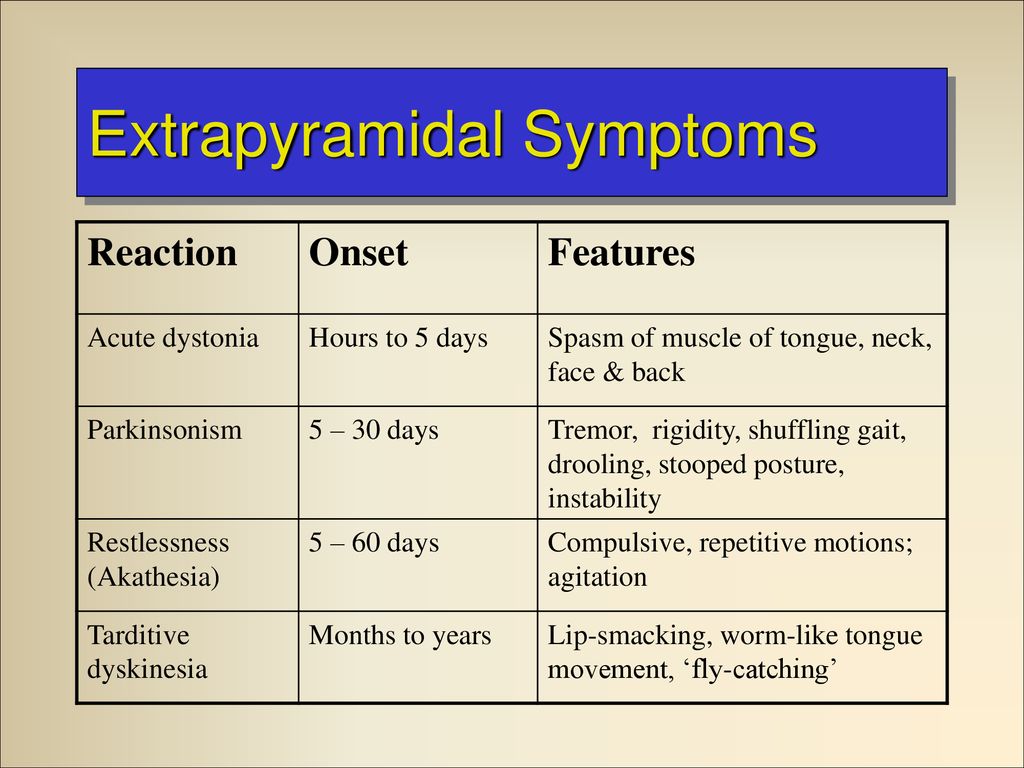 You may report side effects to Health Canada at 1-866-234-2345.
You may report side effects to Health Canada at 1-866-234-2345.
Tardive Dyskinesia — A Side Effect of Antipsychotics
Tardive dyskinesia, a condition that causes involuntary movements, such as frowning, tongue movements, and lip puckering, can be a side effect of long-term use of certain antipsychotic drugs prescribed for conditions such as schizophrenia, schizoaffective disorder, or bipolar disorder, as well as some gastrointestinal problems, such as nausea.
Antipsychotics work in part by blocking dopamine receptors in your brain, but sometimes they have unintended consequences on sensory and motor functions. “By definition, tardive dyskinesia is an iatrogenic disorder, meaning it is due to medications,” says Joseph Jankovic, MD, a professor of neurology and the director of the Parkinson’s Disease Center and Movement Disorders Clinic at Baylor College of Medicine in Houston. “It doesn’t occur without exposure to these medications.”
About 25 percent of patients using first-generation or second-generation antipsychotics long term develop tardive dyskinesia, suggests a meta-analysis published in the March 2017 issue of The Journal of Clinical Psychiatry.![]() A third generation of antipsychotics is now available, but some risk remains, says Dr. Jankovic. Before you take any new medication, have a thorough discussion with your doctor about the risks and benefits.
A third generation of antipsychotics is now available, but some risk remains, says Dr. Jankovic. Before you take any new medication, have a thorough discussion with your doctor about the risks and benefits.
Here’s what you should know about tardive dyskinesia.
1. The symptoms can vary, but they commonly include involuntary mouth movements.
Tardive dyskinesia symptoms can include involuntary mouth movements that resemble chewing, puckering, smacking, or pursing the lips, which can interfere with your ability to speak or chew. Other common symptoms include rapid eye blinking and tongue thrusting. Tardive dyskinesia can also include sensory symptoms, including a burning sensation in the mouth, and some women even experience vaginal burning, says Jankovic. Young people with tardive dyskinesia may also experience tardive dystonia, muscle spasms that may cause involuntary head or neck movements, he says.
2. The symptoms are not always obvious at first.
“The onset of tardive dyskinesia is often very subtle,” says Jankovic. “It may initially be manifested by just a feeling of restlessness or the need to move the lips, jaw, or tongue.” However, some people have an initial reaction to these drugs, such as sudden involuntary painful jaw or eye movements. “That may last a few minutes [or] may be transient and may spontaneously resolve,” says Jankovic. “But that often is a signal that there’s more trouble to come. If exposed again to these drugs in the future, it may evolve into this persistent, possibly permanent, tardive dyskinesia.”
3. Antipsychotic medications should not be stopped without your doctor’s supervision.
If you suspect that you have tardive dyskinesia, consult the healthcare provider who prescribed your antipsychotic medication, says Jankovic. According to a study published in the May 2018 issue of The Journal of Clinical Psychiatry, doctors can administer the Abnormal Involuntary Movement Scale (AIMS) exam, a short screening for tardive dyskinesia.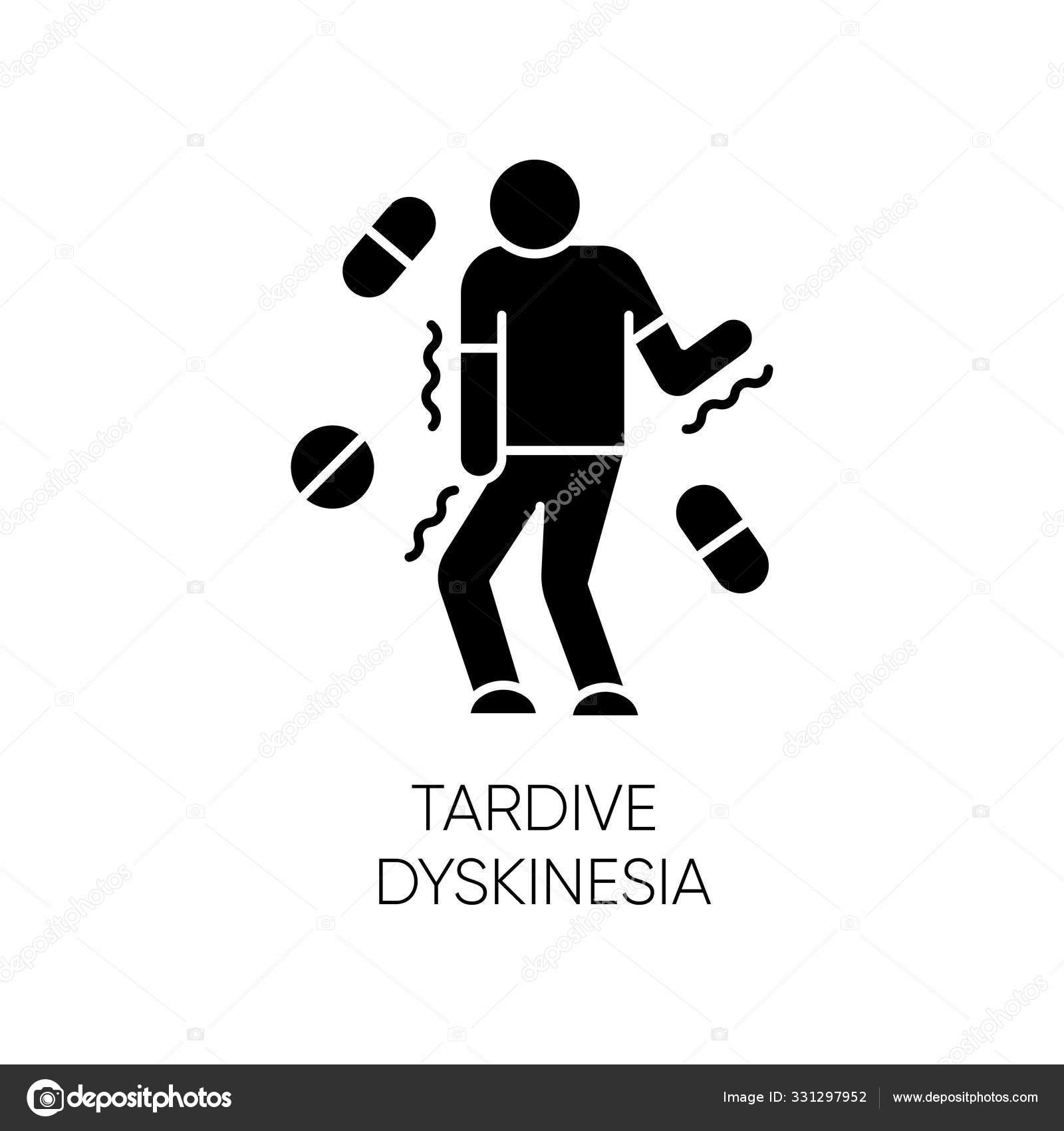 During this simple test, your doctor will ask a few questions and observe you while you make a few movements. If it’s determined that you have tardive dyskinesia, your doctor will help you develop a plan, which may include tapering your dose of the offending medication. This is important: “The drug should not be stopped suddenly by the patient,” says Jankovic. “It should be done under the supervision of the physician and should be done gradually.”
During this simple test, your doctor will ask a few questions and observe you while you make a few movements. If it’s determined that you have tardive dyskinesia, your doctor will help you develop a plan, which may include tapering your dose of the offending medication. This is important: “The drug should not be stopped suddenly by the patient,” says Jankovic. “It should be done under the supervision of the physician and should be done gradually.”
4. A new medication could help relieve your symptoms.
Stopping the medication — under your doctor’s supervision only! — is typically the first step to curbing the symptoms of tardive dyskinesia, says Jankovic. He explains that a new medication called a vesicular monoamine transporter 2 inhibitor, or VMAT2 inhibitor, can help correct the dopamine disruption caused by the antipsychotic.
5. Tardive dyskinesia can take months, or even years, to resolve.
Your prognosis with tardive dyskinesia depends on several factors.![]() For one, people who have taken higher doses of the antipsychotic or for longer durations tend to have longer-lasting symptoms. “Almost all patients with tardive dyskinesia have the condition for months or years, and, particularly in elderly women, it may be a persistent, permanent condition,” says Jankovic. “The sooner they bring symptoms to the attention of the physician and gradually discontinue the medication, the greater likelihood that the condition will resolve.” People with certain health problems, such as diabetes or a prior brain injury, may also have a harder time finding relief from tardive dyskinesia.
For one, people who have taken higher doses of the antipsychotic or for longer durations tend to have longer-lasting symptoms. “Almost all patients with tardive dyskinesia have the condition for months or years, and, particularly in elderly women, it may be a persistent, permanent condition,” says Jankovic. “The sooner they bring symptoms to the attention of the physician and gradually discontinue the medication, the greater likelihood that the condition will resolve.” People with certain health problems, such as diabetes or a prior brain injury, may also have a harder time finding relief from tardive dyskinesia.
6. Some people are more susceptible to tardive dyskinesia.
People with certain risk factors are more likely to develop tardive dyskinesia when taking antipsychotics. According to a review published in June 2018 issue of the Journal of the Neurological Sciences, those risk factors include:
- being elderly
- being female
- having an intellectual disability and brain damage
- having negative symptoms in schizophrenia
- having mood disorders or cognitive symptoms in mood disorders
- having certain genetic risk factors
- taking antipsychotics for longer durations
- having diabetes
- smoking
- abusing alcohol or substances
- taking first-generation antipsychotics
- taking higher doses of an antipsychotic
- having early Parkinson’s side effects
- taking anticholinergics
- having certain other movement disorders
Causes, Symptoms, Treatment & Research
Overview
What is tardive dyskinesia?
Tardive dyskinesia is a neurological syndrome caused by the long-term use of neuroleptic drugs. Neuroleptic drugs are generally prescribed for psychiatric disorders, as well as for some gastrointestinal and neurological disorders.
Neuroleptic drugs are generally prescribed for psychiatric disorders, as well as for some gastrointestinal and neurological disorders.
Tardive dyskinesia is characterized by repetitive, involuntary, purposeless movements. Features of the disorder may include grimacing, tongue protrusion, lip smacking, puckering and pursing, and rapid eye blinking. Rapid movements of the arms, legs, and trunk may also occur. Involuntary movements of the fingers may be present.
Is there any treatment for tardive dyskinesia?
Treatment is highly individualized. The first step is generally to stop or minimize the use of the neuroleptic drug, but this can be done only under close supervision of the physician.
However, for patients with a severe underlying condition this may not be a feasible option. Replacing the neuroleptic drug with substitute drugs may help some individuals.
The only approved drug treatment for tardive dyskenesia is tetrabenazine, which is usually effective but can have side effects that need to be discussed prior to starting therapy.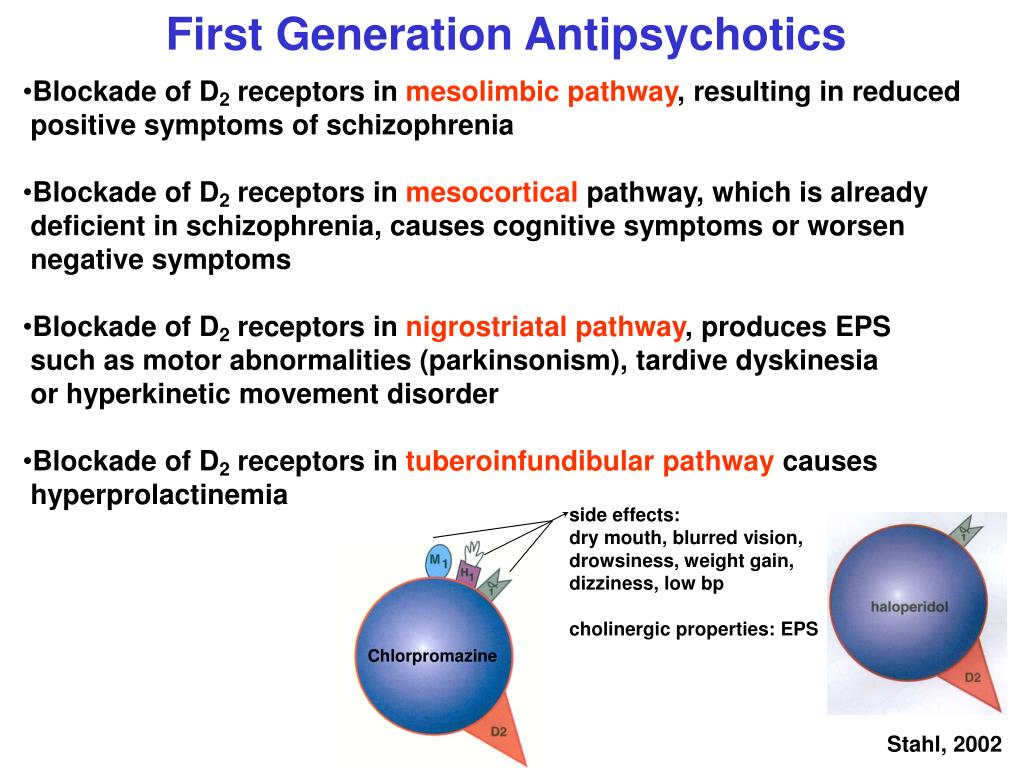 Other drugs such as benzodiazepines, clozapine, or botulinum toxin injections also may be tried.
Other drugs such as benzodiazepines, clozapine, or botulinum toxin injections also may be tried.
What is the prognosis for tardive dyskinesia?
Symptoms of tardive dyskinesia may remain long after discontinuation of neuroleptic drugs. In many cases, the symptoms stop spontaneously, but in some cases they may persist indefinitely.
What research is being done on tardive dyskinesia?
The NINDS conducts and supports a broad range of research on movement disorders including tardive dyskinesia. The goals of this research are to improve understanding of these disorders and to discover ways to treat, prevent, and, ultimately, cure them.
Resources
Organizations
National Institute of Mental Health (NIMH)
National Institutes of Health, DHHS
6001 Executive Blvd. Rm. 8184, MSC 9663
Bethesda, MD 20892-9663
[email protected]
www.nimh.nih.gov
Tel: 301-443-4513; 866-415-8051; 301-443-8431 (TTY)
Fax: 301-443-4279
National Organization for Rare Disorders (NORD)
55 Kenosia Avenue
Danbury, CT 06810
[email protected]
www. rarediseases.org
rarediseases.org
Tel: 203-744-0100; Voice Mail: 800-999-NORD (6673)
Fax: 203-798-2291
Source: National Institutes of Health; National Institute of Neurological Disorders and Stroke*
© 1995-2017 The Cleveland Clinic Foundation. All rights reserved.
Tardive Dyskinesia: Shedding Light on A Serious Medication Side Effect
An estimated 44 million adults in the United States—close to 20 percent of the population—have a mental illness. While only a fraction of those adults use antipsychotic medicines to treat their illness, about one in ten who take certain forms of antipsychotics eventually develops a movement disorder called Tardive Dyskinesia (TD).
Patrick Hendry, Mental Health America
“TD isn’t widely discussed as a potential side effect of older antipsychotics as well as some of the newer atypical anti-psychotics, and many people on these medications don’t even know TD exists,” said Patrick Hendry, vice president of Peer Advocacy, Supports and Services for Mental Health America. “As a result, patients don’t always recognize the symptoms, and when they do, they don’t link them to TD. Instead, they think the TD symptoms are actually symptoms of their underlying behavioral health condition.”
“As a result, patients don’t always recognize the symptoms, and when they do, they don’t link them to TD. Instead, they think the TD symptoms are actually symptoms of their underlying behavioral health condition.”
Who is at Risk for Tardive Dyskinesia?
TD is linked to the use of some newer atypical antipsychotics as well as older, first-generation antipsychotics, which are also called “typical” antipsychotics or “neuroleptics.” Neuroleptics affect the brain chemical dopamine and are commonly prescribed for bipolar disorder, depression, schizophrenia or schizoaffective disorder. They include:
- Chlorpromazine
- Fluphenazine
- Haloperidol
- Perphenazine
- Prochlorperazine
- Thioridazine
- Trifluoperazine
TD affects approximately half a million people in the U.S. Not everyone who takes neuroleptics will get TD. People at higher risk for the disorder include those who:
- Are older than 55
- Are female
- Are non-Caucasian
- Have taken neuroleptics for an extended amount of time
- Have a history of brain damage, dementia, alcohol or substance abuse, diabetes or HIV/AIDS
Tardive Dyskinesia Signs and Symptoms
Unlike temporary side effects of antipsychotics—also known as extrapyramidal symptoms—TD is a permanent condition if left untreated.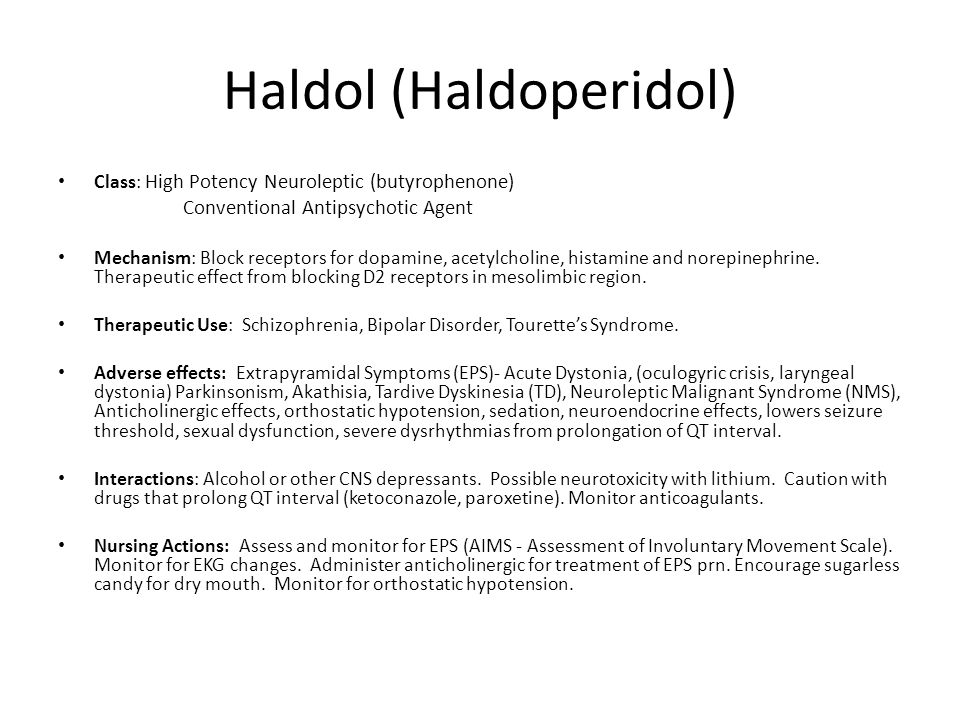 Signs and symptoms can appear as early as three months or as long as three years after starting a neuroleptic medication and can result in pain as well as impact everyday functioning and social interactions. Often, patients don’t even realize their own signs or symptoms, which can include:
Signs and symptoms can appear as early as three months or as long as three years after starting a neuroleptic medication and can result in pain as well as impact everyday functioning and social interactions. Often, patients don’t even realize their own signs or symptoms, which can include:
- Eye movements such as rapid blinking or twitching.
- Mouth movements such as frowning, sticking out the tongue, lip smacking, lip puckering and pursing of the lips.
- Body movements such as rapid movements of the arms, legs and torso, along with wiggling, twisting or tapping of the hands and feet.
- Facial distortion or difficulty swallowing, speaking or breathing (in severe cases).
“The general public may mistake symptoms of TD as having a developmental disability,” Hendry said. “This can lead to a sense of embarrassment, anxiety, social isolation or feeling stigmatized. It’s important for everyone to understand that TD is not linked to mental instability. ”
”
Treating Tardive Dyskinesia
Hendry encourages people taking neuroleptics to tell their behavioral health physician about any involuntary movement side effects as soon as they are noticed to prevent them from becoming more severe. Their physician will most likely start by administering an Abnormal Involuntary Movement Scale (AIMS) evaluation to determine if they have TD. They will also likely refer the patient to a neurologist or movement disorder specialist to confirm a TD diagnosis and rule out other movement disorders like Parkinson’s Disease.
“Patients may be reluctant to bring their symptoms to the attention of their care team,” Hendry said. “They fear that their physician may take them off of the medication they need to manage their behavioral health condition.”
Once a diagnosis of TD has been confirmed, the physician typically will adjust the patient’s medication, by stopping it completely and swapping it with another medication, or by reducing the dose to the lowest possible amount. Additional drugs (e.g., tranquilizers) may be prescribed to ease movements. If TD symptoms do not improve or the patient is not able to stop taking the medicine that causes TD, the physician may prescribe new medications to adjust the levels of dopamine in the brain.
Additional drugs (e.g., tranquilizers) may be prescribed to ease movements. If TD symptoms do not improve or the patient is not able to stop taking the medicine that causes TD, the physician may prescribe new medications to adjust the levels of dopamine in the brain.
“Signs of TD may remain even after stopping the medication that caused them in the first place,” Hendry cautioned.
Support for Patients with Tardive Dyskinesia
Mental Health America supports people with TD through education and advocacy work. Part of that advocacy work focuses on encouraging patients and their loved ones to request diagnostic criteria for medication approval if they are denied access to newer treatments that eliminate or reduce TD symptoms.
Hendry, whose own TD was undiagnosed for some time until his wife brought symptoms to his attention, speaks about TD to groups around the country and has organized focus groups of others with TD to share stories and strategies for living with the condition.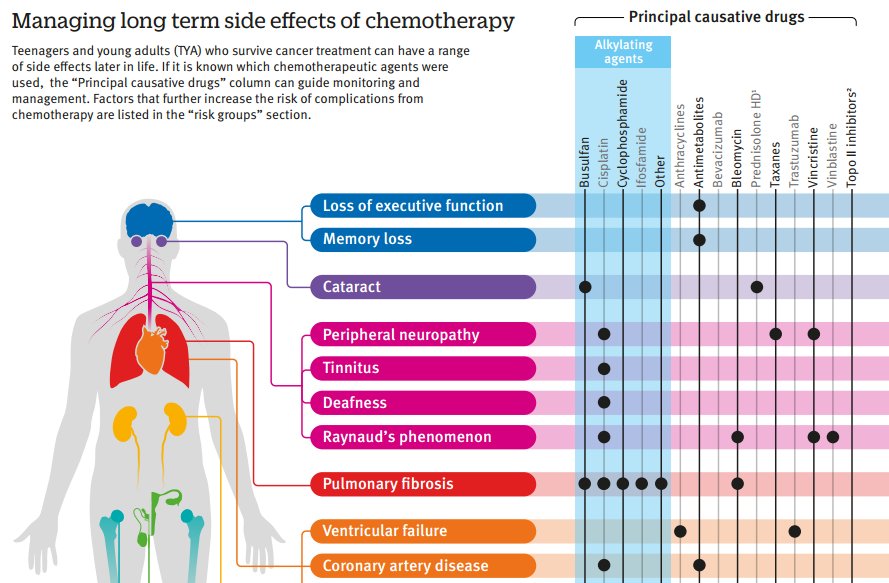
“Having TD can be a lonely experience,” Hendry said. “A sense of community becomes increasingly important.”
Mental Health America’s 250 local affiliates—many of them community mental health centers—also conduct outreach to both patients and providers, particularly around the importance of annual TD screening for patients on old-line antipsychotics.
“We want to make sure that providers stay updated about the potential ramifications and lesser-known side effects of these antipsychotics so they, and their patients, can share in decision-making around behavioral health treatments,” Hendry added. “When patients are well informed and participate fully in treatment decisions, they have better outcomes.”
Aripiprazole (Abilify) and Tardive Dyskinesia
P T. 2008 Jan; 33(1): 32–34.
Dr. Schwartz is Associate Professor in the Department of Psychiatry at the State University of New York (SUNY), Upstate Medical University, in Syracuse, New York. Dr. Raza is completing an externship in psychiatry at the same institution
Dr. Raza is completing an externship in psychiatry at the same institution
This article has been cited by other articles in PMC.
Abstract
Second-generation (atypical) antipsychotic agents are being used within their indications as well as widely off-label because of their lower risk of causing extrapyramidal symptoms and tardive dyskinesia (TD). The risk of metabolic disorders has taken over much of clinical practice and the current literature on adverse effects. In this brief article, we discuss a case of TD that developed after a patient used aripiprazole as off-label augmentation for treatment-resistant depression. We emphasize the fact that TD is an adverse effect that must still be monitored.
INTRODUCTION
Tardive dyskinesia (TD) is usually a late-developing, well-known neuromuscular adverse effect associated with the long-term use of first-generation (typical or conventional) anti-psychotic agents, such as chlorpromazine (Thorazine, Glaxo-SmithKline), haloperidol (Haldol, Ortho-McNeil), and fluphenazine (Prolixin, Apothecon). After months to years of therapy with dopamine-2 (D2) receptor–blockers, patients often experience involuntary choreiform, athetotic, or ballismic dyskinetic movements. These movements most commonly involve the mouth, tongue, facial muscles, and upper extremities. Axial dyskinesias may also occur.1
After months to years of therapy with dopamine-2 (D2) receptor–blockers, patients often experience involuntary choreiform, athetotic, or ballismic dyskinetic movements. These movements most commonly involve the mouth, tongue, facial muscles, and upper extremities. Axial dyskinesias may also occur.1
With the advent of the second-generation (atypical) anti-psychotic agents (SGAs), all of which utilize a serotonin-2 receptor (5-HT2) blockade, the risk of TD has apparently decreased, thereby allowing clinicians to treat schizophrenia with less possibility of a side-effect burden. Given this fact and the potential of these agents to treat several targeted symptoms (i.e., cognition, dysphoria, mania, and agitation), pharmaceutical companies have proceeded with studies and have gained approvals from the Food and Drug Administration (FDA) for most SGAs in areas other than schizophrenia, such as bipolar mania and depression and, in the case of risperidone (Risperdal, Janssen), autism.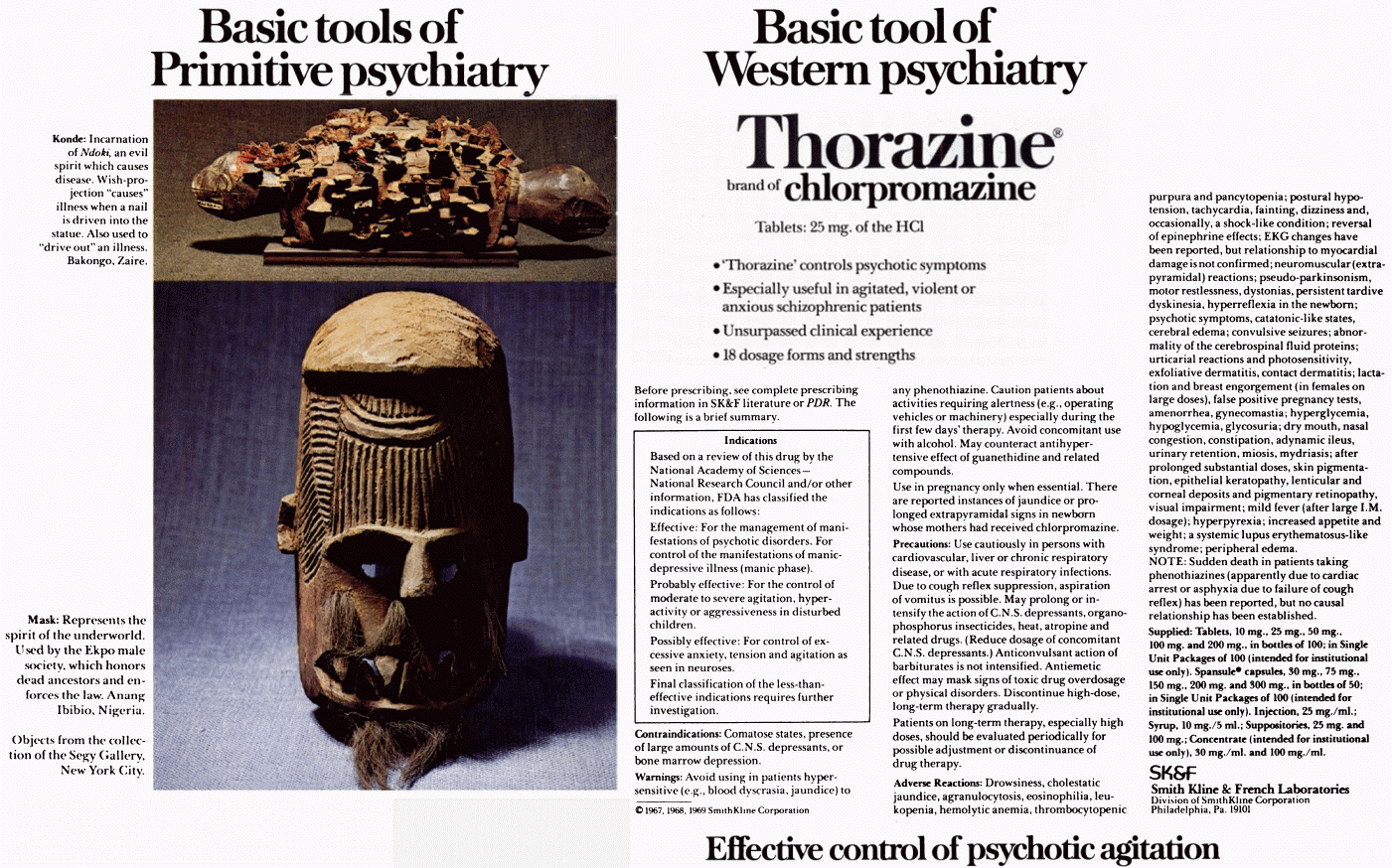 2,3 The off-label use of SGAs also continues to increase in the form of augmented therapies for resistant depression and anxiety.4,5 In fact, the FDA recently approved aripiprazole as the first augmentation (add-on) strategy for the treatment of unipolar major depression.
2,3 The off-label use of SGAs also continues to increase in the form of augmented therapies for resistant depression and anxiety.4,5 In fact, the FDA recently approved aripiprazole as the first augmentation (add-on) strategy for the treatment of unipolar major depression.
This article presents the case of a patient with treatment-resistant depression who experienced TD during augmentation therapy with aripiprazole (Abilify, Bristol-Myers Squibb/ Otsuka). Aripiprazole may be considered an “atypical atypical” agent; it is a partial dopamine agonist, not a full antagonist. Its unique profile allows for subtle increases in tonic dopamine neuron firing rates in brain areas that are hypofunctioning and for dampening of dopaminergic activity in areas that are hyperfunctioning. This blockade of hyperdominergic regions in the brain is thought to alleviate psychosis.
RISK FACTORS FOR TARDIVE DYSKINESIA
Typical risk factors associated with the development of TD include older age, pre-existing movement or neurodegenerative disorders, female sex, the presence of affective illness, and neuroleptic exposure of more than six months. 6 The use of higher-potency, first-generation agents is also more likely to increase the risk of TD and extrapyramidal symptoms (EPS). There is little doubt that conventional antipsychotic agents, compared with SGAs, are more likely to cause TD. However, among the SGAs currently available, those with more transient D2 receptor blockade and lower D2 affinity, such as quetiapine (Seroquel, AstraZeneca), are associated with the smallest risk, at least for EPS and probably TD.
6 The use of higher-potency, first-generation agents is also more likely to increase the risk of TD and extrapyramidal symptoms (EPS). There is little doubt that conventional antipsychotic agents, compared with SGAs, are more likely to cause TD. However, among the SGAs currently available, those with more transient D2 receptor blockade and lower D2 affinity, such as quetiapine (Seroquel, AstraZeneca), are associated with the smallest risk, at least for EPS and probably TD.
At a therapeutic dose, it is noteworthy that aripiprazole has one of the highest D2 receptor affinities; however, because of its partial agonist properties, it has a lower risk of causing acute EPS and, probably, TD.7–10 A timely study of exposure to antipsychotic drugs in nongeriatric adults suggests that the incidence of TD with SGAs is 0.8%, compared with 5.4% with haloperidol, a high-potency, first-generation antipsychotic agent.11
Case Study
Ms. A., a 46-year-old woman, initially reported a long history of mood lability; possible premenstrual dysphoric disorder; and recurrent–moderate major depressive disorder (MDD). At the time of presentation to our clinic, she reported an increased quantity of sleep, sad and irritable mood, poor concentration, low levels of interests and enjoyment, visual illusions, increased feelings of guilt, and passive suicidal ideation that had been present consistently for two years.
A., a 46-year-old woman, initially reported a long history of mood lability; possible premenstrual dysphoric disorder; and recurrent–moderate major depressive disorder (MDD). At the time of presentation to our clinic, she reported an increased quantity of sleep, sad and irritable mood, poor concentration, low levels of interests and enjoyment, visual illusions, increased feelings of guilt, and passive suicidal ideation that had been present consistently for two years.
The patient had undergone an initial trial of fluoxetine (Prozac, Lilly) by another provider but otherwise had no previous psychiatric history. She was experiencing urinary incontinence, trigeminal neuralgia, and lumbar back pain. She used hydrocodone (Vicodin, Abbott) rarely, as needed, for trigeminal pain, and she was routinely using tolterodine (Detrol, Pfizer) for her bladder. Her family history was consistent with alcohol dependence and an anxiety disorder.
We initially prescribed and escalated the dose of duloxetine (Cymbalta, Lilly), up to 120 mg/day, an antidepressant that she had been taking for approximately two years. Although she was not experiencing any adverse effects, she had only a partial response to this medication.
Although she was not experiencing any adverse effects, she had only a partial response to this medication.
Given the perceived clinical effectiveness and availability of some peer-reviewed literature, we discussed augmentation with a SGA. All of the SGAs possess serotonin-2 receptor antagonism, an effective antidepressant mechanism in the FDA-approved antidepressant nefazodone (Serzone, Bristol-Myers Squibb). With this rationale in mind, we attempted low-dose augmentation with ziprasidone (Geodon, Pfizer), 40 mg/day for two weeks, but akathisia and activation of adverse effects prompted the patient to discontinue taking this drug.
Aripiprazole was substituted, initially with a dose of 5 mg/day, which was gradually increased to 15 mg/day. The patient reported consistent and gradual improvement of her depressive symptoms throughout the next few visits, and she attained remission from depression several weeks later. There was no evidence of visual illusions or hallucinations. The patient did note a mild amount of weight gain of about 4 kg (about 9 pounds) as a primary side effect, but she clearly felt that the benefits of the medication in alleviating depression outweighed the side effects.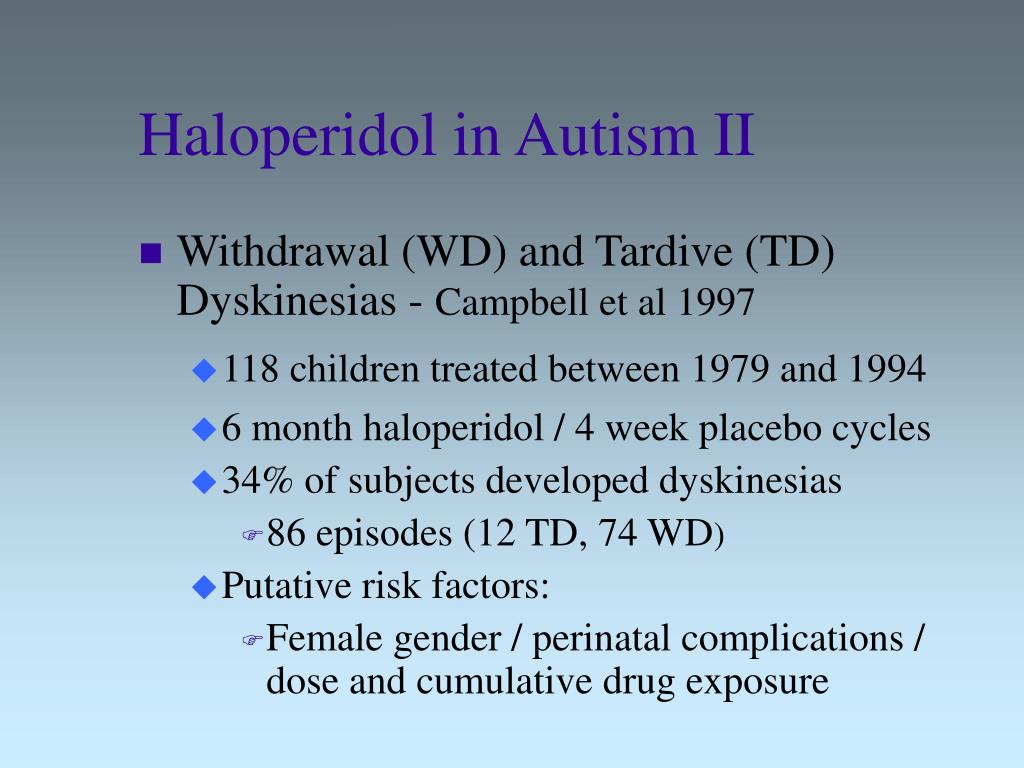
An evaluation for metabolic syndrome was negative; fasting blood glucose and lipid levels were determined, and blood pressure was normal. After 15 months of compliant and consistent treatment with duloxetine and aripiprazole, the patient continued to report remission from depression. However, she then began to have involuntary lateral jaw movements, primarily on her left side, at a rate of two to three movements every few minutes. She reported no dentition problems or pre-existing nervous or motor tics.
The patient underwent a series of voluntary movements so that we could test for the induction of or the natural occurrence of TD. The patient’s score of 9 (range, 0–42), as observed in the Abnormal Involuntary Movement Scale (AIMS), confirmed new-onset TD.
The aripiprazole dose was tapered and discontinued. Eight weeks later, the patient’s lateral movements completely resolved. Follow-up is ongoing.
DISCUSSION
Our case represents new-onset oromandibular TD arising during the use of the atypical neuroleptic agent aripiprazole when used at the time in an off-label manner to manage treatment-resistant depression. The Naranjo Scale is a series of questions that attempt to link the probability of an adverse effect being directly related to a specific drug exposure. Our patient’s score was 5 (range, 0–12) on this scale.12
The Naranjo Scale is a series of questions that attempt to link the probability of an adverse effect being directly related to a specific drug exposure. Our patient’s score was 5 (range, 0–12) on this scale.12
We then conducted a literature review of aripiprazole-induced TD. Maytal et al. had reported a similar case in which aripiprazole was used for depression and TD ensued. TD remitted several weeks after drug cessation.13
Zacher and Hatchett (2006) used aripiprazole 20 mg to treat bipolar illness. Pseudoparkinsonism occurred, and rabbit syndrome (characterized by rhythmic movements of the mouth) was considered to be a dystonic event but not necessarily TD.14
Another patient who was developmentally disabled with obsessive-compulsive disorder was treated with aripiprazole 10 mg. This patient experienced an acute dystonic face, tongue, and arm movements as well as upper limb athetosis. These acute dystonic events were alleviated with diphenhydramine (Benadryl, Pfizer).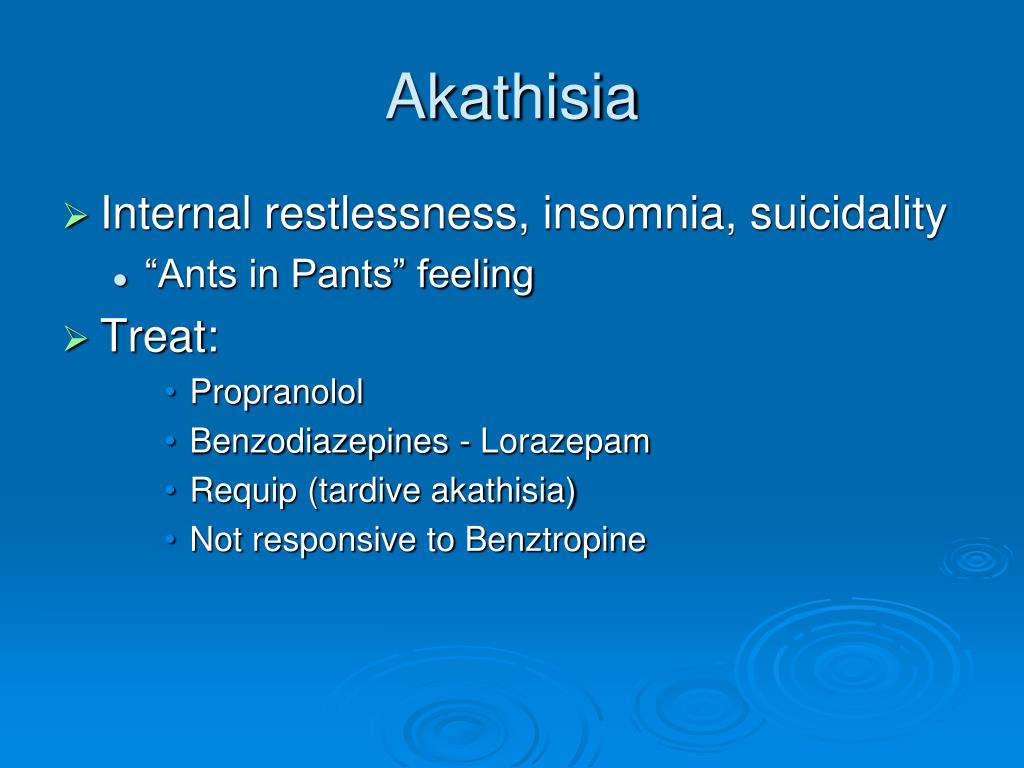 15
15
Sajbel and Evcimen and their colleagues16,17 reported two cases of aripiprazole-induced TD in two patients with schizo-affective disorder. Both patients received 20 mg/day. After 10 days of discontinuing aripiprazole, one patient’s abnormal tongue movements ceased. In other case reports, aripiprazole was used to treat and alleviate TD induced by other neuroleptic agents in patients with bipolar and schizo-affective illnesses. It is difficult to determine whether aripiprazole acted as a treatment or whether stopping the previous higher-potency neuroleptic agent allowed the remission of TD.18–21
Our own patient had an excellent response in terms of remission of depressive symptoms; she experienced a minimal amount of weight gain but ultimately developed lateral jaw movements, now considered to be TD. There was no evidence of dystonia, motor tics, nervous tics, or poor dentition to explain the involuntary movements. She was taking no other medication known for inducing dystonias or dyskinesias. AIMS testing revealed that the lateral jaw movements could be exacerbated during manipulation; her total score was 9, again suggestive of TD.
She was taking no other medication known for inducing dystonias or dyskinesias. AIMS testing revealed that the lateral jaw movements could be exacerbated during manipulation; her total score was 9, again suggestive of TD.
In this case, our patient had probable risk factors for the development of TD, including affective disorder, female sex, and exposure to antipsychotic agents for more than six months. Her dose was a moderate 15 mg/day, but duloxetine probably influenced a mild inhibition of liver enzyme cytochrome P450 (CYP 2D6), allowing elevated aripiprazole blood levels. (Aripiprazole is a substrate for this liver enzyme metabolic system.) There have also been isolated reports of serotonergic antidepressants causing movement disorders such as parkinsonism, which might be a complicating factor in the development of this patient’s TD.
In theory, SGAs are safer than conventional agents in terms of causing TD and EPS. Statistically, SGAs are also safer, but our case report underlies the continued need for appropriate informed consent, patient monitoring, and patient care because of the ability of these agents to produce potentially permanent neuromuscular adverse effects.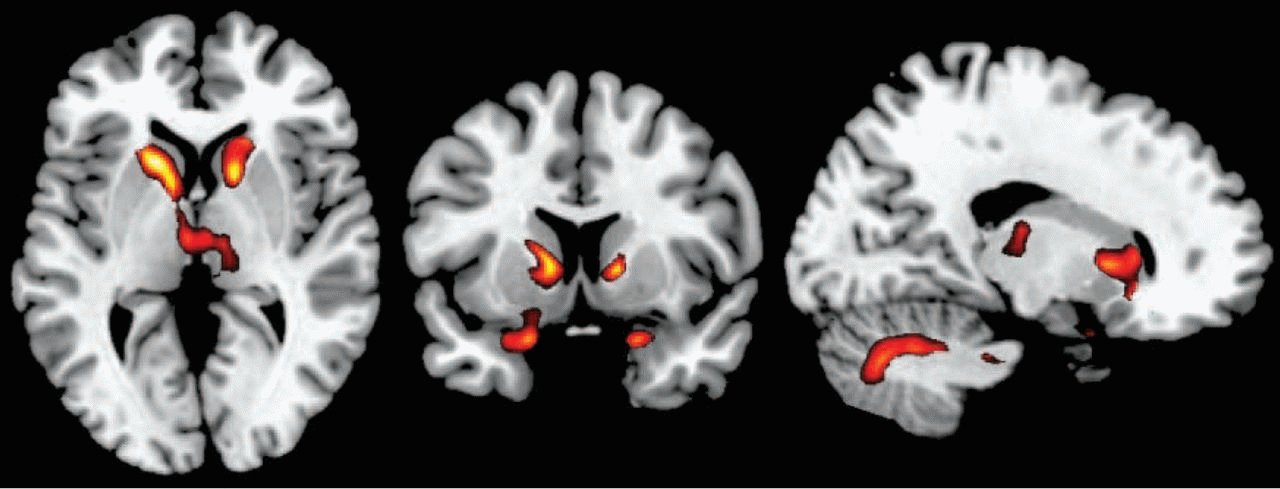
We suggest that agents be used according to their FDA-approved indications when possible.22 If off-label use is prescribed, clinicians should be aware of the evidence base for each SGA in terms of the psychiatric illness being treated. In off-label diagnostic prescribing, we propose that lower-potency SGAs (i.e., quetiapine, aripiprazole, or ziprasidone) be used, even though our case example showed that a lower-potency SGA caused TD.
We also encourage dosing for shorter periods of time, when feasible, and delineating the lowest effective dose on a case-by-case basis.
CONCLUSION
With their ability to reduce the risk of EPS, the atypical antipsychotic agents are the current drugs of choice for schizophrenia and bipolar illness as well as for many off-label applications. Almost all available SGAs have been linked to cases of TD, and a larger naturalistic evidence base is developing as patient exposures increase over time. Therefore, we need to continuously monitor individuals treated with antipsychotic medications regardless of their dose, diagnosis, or choice of SGAs over the conventional antipsychotic drugs.
Footnotes
Disclosure: Dr. Schwartz has received financial support for research from Bristol-Myers Squibb during the past three years.
REFERENCES
1. Tardive Dyskinesia: A Task Force Report of the American Psychiatric Association. Washington DC: American Psychiatric Publishing; 1992. [Google Scholar]2. Young AH. Treatment of bipolar disorder with antipsychotic medication: Issues shared with schizophrenia. J Clin Psychiatry. 2007;68(Suppl 6):24–25. [PubMed] [Google Scholar]3. Stachnik JM, Nunn-Thompson C. Use of atypical antipsychotics in the treatment of autistic disorder. Ann Pharmacother. 2007;41(4):626–634. [PubMed] [Google Scholar]4. Berman RM, Marcus RN, Swanink R, et al. The efficacy and safety of aripiprazole as adjunctive therapy in major depressive disorder: A multicenter, randomized, double-blind, placebo-controlled study. J Clin Psychiatry. 2007;68(6):843–853. [PubMed] [Google Scholar]5. Papakostas GI, Shelton RC, Smith J, Fava M. Augmentation of antidepressants with atypical antipsychotic medications for treatment-resistant major depressive disorder: A meta-analysis. J Clin Psychiatry. 2007;68(6):826–831. [PubMed] [Google Scholar]6. Dolder CR, Jeste DV. Incidence of tardive dyskinesia with typical versus atypical antipsychotics in very-high-risk patients. Biol Psychiatry. 2003;53(12):1142–1145. [PubMed] [Google Scholar]7. Seeman P. An update of fast-off dopamine D2 atypical antipsychotics. Am J Psychiatry. 2005;162:1984–1985. [PubMed] [Google Scholar]8. Seeman P, Tallerico T. Antipsychotic drugs which elicit little or no Parkinsonism bind more loosely than dopamine to brain D2 receptor, yet occupy high levels of these receptors. Mol Psychiatry. 1998;3:123–134. [PubMed] [Google Scholar]9. Lublin H, Eberhard J, Levander S. Current therapy issues and unmet clinical needs in the treatment of schizophrenia: A review of the new generation antipsychotics. Int Clin Psychopharmacol. 2005;20:183–198. [PubMed] [Google Scholar]10. Grunder G, Carisson A, Wong DF. Mechanism of new antipsychotic medications: Occupancy is not just antagonism. Arch Gen Psychiatry. 2003;60:974–977. [PubMed] [Google Scholar]11. Tarsy D, Baldessarini RJ. Epidemiology of tardive dyskinesia: Is risk declining with modern antipsychotics? Mov Disord. 2006;21:589–598. [PubMed] [Google Scholar]12. Naranjo CA, Busto U, Sellers EM, et al. A method for estimating the probability of adverse drug reactions. Clin Pharmacol Ther. 2001;30(2):239–245. [PubMed] [Google Scholar]13. Maytal G, Ostacher M, Stern TA. Aripiprazole-related tardive dyskinesia. CNS Spectrums. 2006;11(6):435–439. [PubMed] [Google Scholar]14. Zacher JL, Hatchett AD. Aripiprazole-induced movement disorder. Am J Psychiatry. 2006;163(1):160–161. [PubMed] [Google Scholar]15. Brahm NC, McElwain DL, Brown RC. Potential aripiprazole-mediated extrapyramidal symptoms in an adult with developmental disability. Am J Health Syst Pharm. 2007;4:827–829. [PubMed] [Google Scholar]16. Sajbel TA, Cheney EM, DeQuardo JR. Aripiprazole-associated dyskinesia. Ann Pharmacother. 2005;39(1):200–201. [PubMed] [Google Scholar]17. Evcimen YA, Evcimen H, Holland J. Aripiprazole-induced tardive dyskinesia: The role of tamoxifen. Am J Psychiatry. 2007;164(9):1436–1437. [PubMed] [Google Scholar]18. Grant MJ, Baldessarini RJ. Possible improvement of neuroleptic-associated tardive dyskinesia during treatment with aripiprazole. Ann Pharmacother. 2005;39(11):1953. [PubMed] [Google Scholar]19. Witschy JK, Winter AS. Improvement in tardive dyskinesia with aripiprazole use. Can J Psychiatry. 2005;50(3):188. [PubMed] [Google Scholar]20. Duggal HS. Aripiprazole-induced improvement in tardive dyskinesia. Can J Psychiatry. 2003;48(11):771–772. [PubMed] [Google Scholar]22. Llorca P-M, Chereau I, Bayle FJ, Lancon C. Tardive dyskinesias and antipsychotics: A review. Eur Psychiatry. 2002;17:129–138. [PubMed] [Google Scholar]
Tardive Dyskinesia: An Antipsychotic Side Effect that Has Not Gone Away
CASE PRESENTATION
An 82-year-old woman was referred for psychiatric evaluation by her primary care physician. Mrs. C was accompanied by her 86-year-old husband. She has suffered from dementia of the Alzheimer’s type for the past six years. Her husband has been her primary caregiver, with some assistance from the couple’s son and daughter-in-law, who live nearby. Mrs. C sat quietly next to her husband in the waiting room, but on observation displayed prominent movements of her lips and jaw, as well as restless and jerky movement in her arms and legs. Mr. C is a very reliable historian, who has kept detailed notes regarding his wife’s condition.
Mrs. C was very hostile and suspicious early in the course of her dementia, and refused to bathe or change clothing. Perphenazine 2 mg 3 times per day was prescribed with marked improvement in her paranoia and behavior. She continued on this medication for two years, until she developed a tremor in her hands, unsteady gait, and suffered several falls. The perphenazine was discontinued after she saw a neurologist who diagnosed drug-induced parkinsonism. Mrs. C was stable for four months, but became aggressive toward her daughter-in-law and refused to allow a home aide into the house. Risperidone 1 mg twice per day was started by the neurologist. Improvement was noted in her physical aggression, and she allowed their housekeeper to come in to help with cleaning and cooking. Mrs. C continued on risperidone for the next three years.
Mr. C grew concerned when she started to show some lip-smacking movements during the second year, but they appeared to improve after her dentures were adjusted. The movements began to worsen over the past six months. The neurologist who initially prescribed the risperidone retired, so Mr. C consulted with their primary care physician. Mrs. C has no active medical problems, and takes no medications other than risperidone. The primary care physician noted movements of her tongue and jaw, and found that she appeared rather restless. He suggested tapering the risperidone to 0.5 mg twice daily, prescribed vitamin E 400 IU twice daily, and referred Mrs. C to a psychiatrist. Mr. C stopped giving his wife the risperidone. He noted that Mrs. C was initially very restless, but later calmed down. Her facial and hand movements continued.
Due to family problems (the couple’s son and daughter-in-law were severely injured in a car accident), it was several months before they could schedule an appointment with a psychiatrist. On examination by the psychiatrist, Mrs. C was alert and able to maintain eye contact. She responded to her name, but was unable to answer any questions. Her score on a Mini-Mental State Examination was 0/30. She scored 22 of 28 on the Abnormal Involuntary Movement Scale (AIMS), suggestive of moderate-to-severe tardive dyskinesia. Mrs. C appeared to have no distress or awareness related to the constant movements. She periodically stood up during the interview, and sat back down, several times.
Mr. C noted that his wife was cooperative with care and usually calm. She often wandered around the house at night, but he had installed safety locks on the doors and kitchen cabinets and placed nightlights throughout the home. Mr. C was very concerned that his wife was suffering as a result of her mouth movements, as she had difficulty chewing and required soft food. He was reluctant to give her any medication, but wanted to know if something could be done to help her.
DISCUSSION
Tardive dyskinesia is a movement disorder that results from treatment with antipsychotic agents. It is characterized by involuntary movements of the face, tongue, jaw, or extremities that have repetitive, choreiform, or athetoid qualities (Table I).1-5 Older adults are at particular risk for tardive dyskinesia and may develop this syndrome after as little as one month of continuous treatment with an antipsychotic agent. Other risk factors for the development of tardive dyskinesia include dementia, history of mood disorder, female gender, head trauma, and prior parkinsonism. A prior history of alcohol dependence, increasing age, and length of neuroleptic exposure also add to the risk of developing this disabling movement disorder.1,2
The pathophysiology of tardive dyskinesia is believed to be related to hypersensitivity of post-synaptic dopamine-2 (D2) receptors that result from prolonged blockade by antipsychotic and other agents (Table II).1-3 This blockade results in an increase in dopamine turnover, an imbalance between D1 and D2 receptors, and an abnormally heightened receptor response that results in the clinically abnormal movements. Other neurotransmitter systems, including gamma-aminobutyric acid (GABA), may play a role as well. Tardive dyskinesia emerges over time and worsens with continuous antipsychotic treatment.3 Tardive dyskinesia has become less prevalent since use of atypical or second-generation anti-psychotic agents has become common.
Older first-generation antipsychotic agents such as haloperidol, fluphenazine, and perphenazine are associated with significant extrapyramidal side effects including drug-induced parkinsonism and a high rate of tardive dyskinesia in older adults. Among older adults treated with conventional antipsychotics, tardive dyskinesia emerges in 26-50% after one year of continuous treatment.1-3 Of concern are patients who appear uniquely sensitive to developing dyskinetic movements, such as those with pre-existing parkinsonian features and dementia. These patients may show signs of tardive dyskinesia in the first few months of therapy.1
Use of atypical or second-generation antipsychotic agents has significantly reduced the prevalence of tardive dyskinesia; however, clinicians are often less likely to screen for this side effect.4 The risk of tardive dyskinesia is significantly lower with these agents, but at least 5-7% of older patients will still develop abnormal movements after one year of continuous therapy.2 Screening patients with AIMS is useful to identify and monitor signs of tardive dyskinesia.4 This scale has been used clinically to evaluate patients before and during the course of therapy. If used regularly, it enables the clinician to identify abnormal movements as they emerge in the mild stage, when intervention may stop the progression or lead to resolution of the symptoms.3 The differential diagnosis of tardive dyskinesia includes a variety of illnesses and functional disorders. These include Huntington’s disease, Wilson’s disease, systemic lupus erythematosus, hyperthyroidism with thyrotoxicosis, and heavy metal poisoning. Dental problems, including poorly fitting or missing dentures, may result in lip, tongue, and cheek movements.5
Many medications used to treat Parkinson’s disease, including amantadine, bromocriptine, pergolide, pramipexole, and levodopa/carbidopa, can produce choreiform movements that are often mistaken for tardive dyskinesia.6 About 5% of older adults who have never been exposed to antipsychotics or other agents that block dopamine develop spontaneous dyskinesias. In any patient who displays signs of dyskinetic movements, a thorough medical evaluation, assessment of functional status, and review of medications are vital.1-3 Treatment of tardive dyskinesia is most successful if the antipsychotic or other dopamine-blocking agent can be discontinued.1,3 Dyskinesias may temporarily worsen when the antipsychotic is stopped, a syndrome referred to as withdrawal dyskinesia, but will slowly improve over time. If the patient can remain off neuroleptic medications, slow improvement in tardive dyskinesia will result, with up to 50% of patients showing significant improvement after two years.3 Mild tardive dyskinesia often improves within several months of discontinuation. Patients with dementia, those with chronic exposure over decades, and the very old are less likely to show total remission of tardive dyskinesia, but still may display functional improvement over time.
Many medications have been utilized in the treatment of tardive dyskinesia.3 Vitamin E was once considered to be beneficial, but its use may be limited to delaying the onset of symptoms. Benzodiazepines, donepezil, melatonin, and branched-chain amino acids have each been utilized in small-scale trials, demonstrating improvement in tardive dyskinesia. The dopamine-depleting agents reserpine and tetrabenazine have been useful in improving symptoms, but may not be tolerable in older adults. If patients require ongoing antipsychotic treatment, clozapine has demonstrated efficacy as an antipsychotic while improving tardive dyskinesia in some chronically psychotic schizophrenics.3 It is important to note that medications for Parkinson’s disease do not help improve tardive dyskinesia, and anticholinergic agents such as benztropine and trihexyphenidyl may lead to worsening of the symptoms.6
OUTCOME OF THE CASE PATIENT
Mrs. C suffered from tardive dyskinesia that was interfering with her ability to chew food. She did not display any signs of psychosis, and her family was managing her wandering behavior well with environmental interventions. Mrs. C started to lose weight when eating only soft food and appeared more restless. The goal of maximizing her comfort was identified by her husband as being most important. She was started on clonazepam 0.25 mg twice daily, with improvement in her restlessness. Over the next month, the clonazepam dose was slowly increased to 0.5 mg twice daily. She began to show some slow improvements in her lip, tongue, and cheek movements, and after six months was eating regular food without problems. Her score on the AIMS was 14 of 28, showing improvement. Her husband was counseled regarding side effects of sedation. He was given a list of all antipsychotic medications and others that may worsen tardive dyskinesia and was instructed that these should be avoided.
FGBNU NTSPZ. ‹Chat General Psychiatry ››
Side effects and complications in the treatment of psychotropic drugs
Side effects in psychopharmacotherapy, as in the use of many other drugs, are associated with the inability to selectively influence exclusively the pathologically altered brain systems. Some of them are directly related to the therapeutic effect of drugs and occurs in most patients taking this drug.As an example, the neuroleptic syndrome with the use of first generation antipsychotics can be cited. Other side effects and complications, which usually occur rarely, are due to the patient’s individual reactions to a particular drug. In this section, only the most typical side effects and complications associated with the use of psychopharmacological agents of various classes will be considered.
Antipsychotics. The main side effects of neuroleptic treatment are neuroleptic syndrome. The leading clinical manifestations of this syndrome are considered extrapyramidal disorders with a predominance of either hypo- or hyperkinetic disorders. Hypokinetic disorders include drug parkinsonism, manifested by increased muscle tone, trismus, rigidity, stiffness and slowness of movement and speech. Hyperkinetic disorders include tremors, hyperkinesis (choreiform, athetoid, etc.). Usually in the clinical picture, in certain proportions, there are both hypo- and hyperkinetic disorders.The phenomena of dyskinesia can be paroxysmal in nature. Most often they are localized in the mouth and are manifested by spasmodic contractions of the muscles of the pharynx, tongue, lips, jaws, but often spread to other muscle groups (oculogyric crises, torticollis, torsion spasm, exitomotor crises). Along with extrapyramidal disorders, the phenomena of akathisia can be observed – a feeling of restlessness, “restlessness in the legs”, combined with tasikinesia (the need to move, change position).In severe cases, akathisia is accompanied by anxiety, agitation, and sleep disorders. A special group of dyskinesia includes tardive dyskinesia , expressed in involuntary movements of the lips, tongue, face, less often choreiform movements of the limbs. The very name “tardive dyskinesia” means that it occurs after long-term treatment with antipsychotics (on average after 2 years). In these cases, there is no correlation with the type of drug, doses and characteristics of treatment at earlier stages, including with previous extrapyramidal disorders.
Among the disorders of the autonomic nervous system, orthostatic hypotension is most often observed (it is not recommended to stop it with adrenaline), sweating, weight gain, changes in appetite, constipation, and diarrhea. Sometimes anticholinergic effects are noted – visual impairment, dysuric phenomena. Possible functional disorders of the cardiovascular system with changes in the ECG in the form of an increase in the interval Q – T , reduction of the Gili wave of its inversion, tachy or bradycardia.Sometimes there are side effects in the form of photosensitization, dermatitis, skin pigmentation; allergic skin reactions are possible. Side effects associated with an increase in prolactin in the blood are manifested in the form of dysmenorrhea or oligomenorrhea, pseudohermaphroditism in women, gynecomastia and delayed ejaculation in men, decreased libido, galactorrhea, hirsutism. In rare cases, changes in blood sugar levels are observed, as well as symptoms of diabetes insipidus.
Severe complications of neuroleptic therapy include general allergic and toxic reactions, hepatitis, pathological changes in the organ of vision (pathological pigmentation of refractive media, combined with pathological pigmentation of the skin of the hands and face – “skin-eye syndrome”, toxic changes in the retina), impaired blood picture (leukopenia , agranulocytosis, aplastic anemia, thrombocytopenia).Among the mental disorders associated with therapy, there are anesthetic depression, painful disturbance of the feeling of sleep, delirium (more often it occurs with a sharp change in the dose of antipsychotics in people with organic diseases of the central nervous system, the elderly or children), epileptiform seizures.
New generation antipsychotics, in comparison with traditional derivatives of phenothiazines and butyrophenones, cause significantly fewer side effects and complications.
Antidepressants. Side effects related to the central nervous system and the autonomic nervous system are expressed by dizziness, tremors, dysarthria, impaired consciousness in the form of delirium, epileptiform seizures. Possible exacerbation of anxiety disorders, activation of suicidal tendencies, inversion of affect, drowsiness or, on the contrary, insomnia. Side effects can be manifested by hypotension, sinus tachycardia, arrhythmia, atrioventricular conduction disorder. Complications from the hematopoietic system are relatively rare.Their clinical signs are inhibition of bone marrow function, leukopenia, agranulocytosis, thrombocytopenia, hemolytic anemia. The dysfunction of the endocrine system is limited by changes in blood sugar (a downward trend).
When treating with antidepressants, there are also side effects such as dry mucous membranes, impaired accommodation, increased intraocular pressure, intestinal hypo- or atony (constipation), urinary retention. Most often they are observed when taking traditional tricyclic antidepressants and are associated with their anticholinergic action.The use of tricyclic drugs is often accompanied by an increase in appetite and a significant increase in body weight. With the simultaneous use of MAO inhibitors with foods containing tyramine or its precursor tyrosine (cheeses, etc.), a “cheese effect” occurs, manifested by hypertension, hyperthermia, convulsions and sometimes fatal.
Newer generations of antidepressants are better tolerated and safer. It can only be noted that when prescribing serotonin reuptake inhibitors and reversible MAO-A inhibitors, disturbances in the activity of the gastrointestinal tract (nausea, vomiting, diarrhea), headaches, insomnia, anxiety are observed.The development of impotence while taking serotonin reuptake inhibitors is also described. In cases of a combination of serotonin reuptake inhibitors with drugs of the tricyclic group, the formation of the so-called serotonin syndrome is possible, which is manifested by an increase in body temperature and signs of intoxication. For tetracyclic antidepressants, daytime sleepiness and lethargy are more characteristic.
Tranquilizers. Side effects during treatment with tranquilizers are most often manifested by daytime sleepiness, lethargy,
muscle weakness, impaired concentration, short-term memory, as well as a slowdown in the speed of mental reactions.In some cases, paradoxical reactions develop in the form of anxiety, insomnia, psychomotor agitation, hallucinations. Ataxia, dysarthria, tremor occur much less frequently.
Among the dysfunctions of the autonomic nervous system and other organs and systems, hypotension, constipation, nausea, retention or incontinence of urine, decreased libido are noted. Signs of depression of the respiratory center may also appear (respiratory arrest is possible). Changes in the functions of the organs of vision are manifested in the form of diplopia and impaired accommodation.Long-term use of tranquilizers is dangerous due to the possibility of developing addiction to them, i.e. mental and physical dependence.
Nootropics. Side effects of nootropics are rare. Sometimes nervousness, irritability, elements of psychomotor agitation and disinhibition of drives, as well as anxiety and insomnia appear. Dizziness, headache, tremors are possible; in some cases, dyspeptic symptoms – nausea, abdominal pain.
Stimulants. These drugs have side effects on the central nervous system (tremors, euphoria, insomnia, irritability, headaches, and signs of psychomotor agitation). Violations of the autonomic nervous system can be observed – sweating, dry mucous membranes, anorexia, as well as cardiovascular disorders – arrhythmia, tachycardia, increased blood pressure. When treating diabetic patients, it should be borne in mind that while taking stimulants, the body’s sensitivity to insulin may change.Disorder of sexual function is also possible.
It is important to emphasize that long-term and frequent use of stimulants can lead to the development of mental and physical dependence.
Lithium salts. Side effects or complications with the use of lithium salts usually occur at the beginning of therapy until a stable concentration of the drug in the blood is established. With proper therapy under the control of lithium in the blood and full informing the patient about the features of treatment, side effects rarely interfere with the prophylactic course.The patient must first of all know about the peculiarities of the diet – the exclusion of a large intake of fluid and salt, the restriction of food rich in lithium – smoked meats, some types of hard cheeses, red wine.
The most common side effect of lithium therapy is tremor. A pronounced tremor, indicative of the neurotoxic effect of lithium, increases with a high concentration of lithium in the plasma. Often there are dysfunctions of the gastrointestinal tract – nausea, vomiting, loss of appetite, diarrhea.Weight gain, polydipsia, and polyuria are common. Lithium inhibits thyroid function, causing hypothyroidism. Usually these phenomena are transient. In severe cases, discontinuation of therapy is indicated. The effects of lithium on the cardiovascular system are similar to those of hypokalemia, but, as a rule, no special intervention is required. The appearance of acne, maculopapular rash, worsening of the course of psoriasis are possible. Cases of alopecia have been reported. With prolonged lithium therapy, violations in the cognitive sphere can be observed: memory loss, slowing down of psychomotor reactions, dysphoria.Signs of severe toxic conditions and drug overdose: metallic taste in the mouth, thirst, severe tremor, dysarthria, ataxia, and with a further increase in intoxication – impaired consciousness, fascicular muscle twitching, myoclonus, convulsions, coma. The longer the toxic level of lithium in the blood persists, the greater the likelihood of irreversible changes in the central nervous system, and in especially severe cases, death.
Lithium therapy is contraindicated in patients with impaired renal excretory function, cardiovascular diseases (in the stage of decompensation), chronic diseases of the gastrointestinal tract (stomach and duodenal ulcers, etc.)), epilepsy, in conditions requiring a salt-free diet, during pregnancy, in old age. A relative contraindication to the appointment of lithium preparations is a dysfunction of the thyroid gland.
Anticonvulsants. The most common side effects that occur during treatment with anticonvulsants, in particular carbamazepine, are functional disorders of the central nervous system – lethargy, drowsiness, dizziness, ataxia. Hyperreflexia, myoclonus, tremor can be observed much less frequently.The severity of these phenomena decreases significantly with a gradual increase in doses. They usually disappear during therapy. Sometimes there are side effects such as nausea, vomiting, constipation or diarrhea, decreased appetite; development of hepatitis is possible. Serious and rare (1 case in 20,000) complications of carbamazepine therapy include inhibition of the white blood cell. This drug should be used with caution in patients with cardiovascular pathology (it can contribute to a decrease in intracardiac conduction), with glaucoma, prostate adenoma and diabetes.In case of an overdose of carbamazepine, drowsiness occurs, which can turn into a stupor and coma; sometimes there are convulsions and dyskinesia of the facial muscles, functional disorders of the autonomic nervous system – hypothermia, depression of the respiratory and vasomotor centers (sinus tachycardia, arterial hypo- and hypertension). With a pronounced cardiotoxic effect of carbamazepine, an atrioventricular block may develop.
General principles of treatment for side effects and complications of psychopharmacotherapy
With pronounced side effects, the question inevitably arises about the ratio of positive and negative in the action of a particular drug and the advisability of continuing therapy.If the effectiveness of the drug is clearly superior to its undesirable effect, then to improve its tolerance in some cases, it is sufficient to temporarily reduce the dose, and then slowly increase it to therapeutic. Sometimes it is advisable to change the regimen and rhythm of taking the drug with a redistribution of the daily dose throughout the day.
Often, additional therapeutic agents are required to relieve side effects.
Special therapy, as a rule, is carried out in the presence of side effects caused by the use of antipsychotics.For the correction of extrapyramidal disorders most characteristic of neuroleptic therapy, anticholinergic drugs are used – trihexyphenidil (artan, cyclodol, parkopan), bentropin (cogenetin, tremblex), biperidine (akineton). Correctors of different pharmacological groups have different features of action, therefore, if the effectiveness of drugs of one group is low, drugs of another group should be prescribed or the form of administration should be changed (oral to parenteral). It must be remembered that corrective therapy should be started after the first signs of side effects appear, but not prophylactically.
In some patients, the desired effectiveness of therapy is achieved by a combination of anticholinergics with tranquilizers with a pronounced muscle relaxant effect (diazepam, lorazepam). A combination of anticholinergics, tranquilizers, and β-blockers (propranolol) is indicated for the treatment of akathisia.
A special tactic of treatment is carried out with tardive dyskinesia. According to modern concepts, the biological basis of these conditions is an increase in sensitivity and an increase in the density of dopaminergic receptors of the striatum due to their prolonged blockade by neuroleptics.On this basis, it is recommended to reduce the dose of antipsychotics. If the phenomena of tardive dyskinesia are increasing, then antipsychotics must be canceled. A positive effect in these cases is sometimes given by the appointment of GABA agonists (baclofen, aminalon, picamilon), cholinergic receptor agonists (tacrine, cogitum), B vitamins. Some features are observed only when orthostatic hypotension is relieved. For this purpose, it is recommended to use β-adrenergic receptor stimulants, for example, mezaton.
The tremor that appears at high concentrations of lithium in the blood is stopped by a decrease in the daily dose of the drug.You can use a fractional division of the daily dose, and also prescribe antipsychotics in addition. In the event of gastrointestinal disorders, lithium tolerance can be improved by reducing doses, taking the drug fractionally or taking it immediately after eating. These disorders, as well as an increase in body weight, polydipsia can also be corrected by the appointment of prolonged forms of lithium preparations, which make it possible to smooth out sharp fluctuations in the concentration of a drug in the blood (the latter, according to existing concepts, cause the occurrence of side effects).In severe thyroid dysfunctions, lithium therapy is discontinued and hormonal drugs are prescribed. In case of severe intoxication, lithium preparations should be immediately discontinued and dehydration should be controlled; in severe cases, hemodialysis is indicated.
Complications during treatment with carbamazepine can also be stopped by lowering doses and preventing their development by gradually increasing the dose. In more severe cases, with an overdose of carbamazepine, you should immediately rinse the stomach, prescribe activated charcoal, and then carry out intensive general medical detoxification measures.
Thus, a large group of side effects of psychotropic drugs does not require special therapy, since the degree of their severity decreases with continuing therapy with the same doses or with decreasing doses. This applies in particular to sedation and orthostatic disorders. With a significant severity of side effects and the impossibility of canceling therapy or transferring the patient to other drugs, appropriate symptomatic agents are prescribed and treatment is continued under the constant supervision of a physician with the control of laboratory parameters.
90,000 Copy The first drug for the treatment of tardive dyskinesia has been approved in America
A little more than half a century has passed since the discovery of antipsychotics – drugs with the help of which psychiatrists were first able to cure ps
ichic disorders. The drugs were effective, but had a number of side effects, among which the so-called tardive dyskinesia stood out.
Tardive dyskinesia – spontaneous spasms of various muscles of the body arising on the background of prolonged use of therapeutic doses of psychotropic drugs.For example, violent curvature of the mouth, prolapse of the tongue, grimaces (oromandibular dystonia), closing the eyes (blepharospasm), abducting the eyeballs upward (“rolling the eyes”, oculogyric crisis), and others. The mechanism of development of tardive dyskinesia is associated with the appearance in the brain of hypersensitivity to one of the main transmitters of nerve impulses – the substance dopamine. The incidence of tardive dyskinesia in studies was from 10% in young patients to 25% in middle-aged and elderly people (Wikipedia).
For a long time, scientists have tried unsuccessfully to fight tardive dyskinesia. Recently, their search has been crowned with success. The first drug was created and approved for use against the above symptoms Ingrezza , the active ingredient of which is Valbenazine. The substance is synthesized, tested and presented by the pharmaceutical company Neurocrine Biosciences, Inc. The effectiveness of the drug has been confirmed in clinical trials.
The mechanism of action of Ingrezz is associated with the suppression of the activity of the vesicular monoamine transporter (VMAT2) in the neurons of the brain, which leads to a decrease in the concentration of dopamine in the synaptic cleft.
Side effects of Ingrezza are drowsiness, headache, imbalance, dry mouth, a tendency to increase the heart rate, nausea, joint pain, mild deceleration of cardiac conduction.
The drug is not recommended for use in persons with congenital heart disease, during pregnancy and during breastfeeding. Concomitant use with monoamine oxidase inhibitors is not recommended. Special attention is paid to the possibility of increasing the concentration of Digoxin in the blood while taking the latter with Valbenazine.
Ingrezza went on sale in the US in April 2017.
gaz.wiki – gaz.wiki
Navigation
- Main page
Languages
- Deutsch
- Français
- Nederlands
- Russian
- Italiano
- Español
- Polski
- Português
- Norsk
- Suomen kieli
- Magyar
- Čeština
- Türkçe
- Dansk
- Română
- Svenska
Extrapyramidal adverse symptoms (EPS) / ConsultantPlus
Prescribing anticholinergics for the prevention of EPS in patients III during antipsychotic therapy is unreasonable and not recommended, since they do not develop in every patient [30, 40-46, 172, 179].Evidence level 5, recommendation level of conviction – C. Comments: EPS includes acute dystonia, akathisia, pseudoparkinsonism, and tardive dyskinesia. The addition of an anticholinergic drug (trihexyphenidyl **, biperiden **), a reduction in the dose of a typical antipsychotic, or a switch to AVP treatment (this is currently preferred) are the options of choice in the event of EPS [238, 239]. EPS most often develop with the use of APP, some AVPs may also have dose-dependent EPS (Table.3) [30, 41 – 45, 179]. The risk of developing EPS is higher when treated with neuroleptics from the group of piperazine phenothiazines and butyrophenones [39–46, 172]. EPS are easily recognized, however, their occurrence is very difficult to predict, since it is partly related to the dosage, partly with the characteristics of the drug itself, partly with the individual sensitivity of the patient. Parkinsonian symptoms disappear after drug withdrawal or can be reduced by the addition of central anticholinergics, the so-called correctors. antipsychotic therapy (tab.3) [30, 40 – 45, 238, 239]. Antiparkinsonian drugs can contribute to the development of tardive dyskinesia and worsen its course, as well as cause drug dependence and cognitive impairment [30, 40 – 46, 172, 179].
Table 3. Relief of side effects of neuroleptic therapy
Adverse event | Recommended therapy |
Acute | |
Acute dystonia | |
Pseudoparkinsonism (akineto-rigid symptom complex) | Trihexyphenidyl ** 2-12 mg, biperiden ** 5-10 mg (intramuscularly) |
| Propranolol ** 10 – 20 mg [224, 300], biperiden ** 5 – 10 mg (oral, intramuscular) | |
Withdrawal of the antipsychotic drug.Detoxification, infusion and homeostatic therapy, centrally acting muscle relaxants, indirect dopamine agonists (stimulants of dopamine receptors) | |
Tardive dyskinesia | Transfer to AVP with a satisfactory profile of clotapin, neurological tolerance. |
Open the full text of the document
Use of atypical antipsychotics in children (evidence-based practice)
In order to increase the efficiency and safety of the use of atypical antipsychotics in pediatric practice, first of all, the requirements for the quality of diagnostics should be increased.It is necessary to make sure that the child is reasonably, in strict accordance with the diagnostic criteria of ICD-10, a psychiatric diagnosis that requires treatment with atypical antipsychotics.
Unfortunately, child psychiatrists often make incorrect diagnoses that ignore diagnostic criteria. Such a diagnosis makes it difficult to carry out therapy based on the correct use of the results of international controlled trials.
In any case, therapy should be started with the minimum doses of antipsychotics approved for pediatric practice, titrated until a patient’s therapeutic response to the drug or side effects appear.
Consider a typical therapy situation as an example. We are helping a 16-year-old girl with acute mania. She spent the whole night in a nightclub, was intrusive with visitors and, after being expelled from the institution by security, tried to get back through the windows of the utility room. She had spent the previous nights in front of her computer, trying to shop online. Not having a driver’s license, I tried to go somewhere in the car of my parents.
Treatment for this girl can be initiated by administering 2 mg of aripiprazole per day, titrating the drug to the target dose (10 mg per day).No less reasonable is the appointment of risperidone, quetiapine, olanzapine or ziprasidone. During the dose titration process, it is necessary to monitor changes in the state of the adolescent. Did the girl sleep better? Has she stopped committing reckless acts, wasting money? Was she able to resume attending school? How good is her social functioning and school adaptation? For further treatment of the adolescent, antipsychotic doses should be used that provide a therapeutic effect, but do not cause side effects.
In noncompliant adolescents who refuse to swallow tablets, we may use an oral risperidone solution during the dose titration step. After stabilization of doses, it is possible to use Rispolept Konsta® or Rispolept Kviklet®. If risperidone is poorly tolerated or if higher doses of the drug (4–8 mg risperidone) are required, I would consider using slow release paliperidone capsules (Invegi®).
I would like to draw the readers’ attention to the fact that, when discussing the possibility of prescribing risperidone consta or Invega to children, we go beyond the FDA recommendations, but we can confidently assume that registration of pediatric indications for these dosage forms of risperidone is only a matter of time. However, you should not start your child’s treatment with these drugs. Initially, we should consider FDA approved therapeutic alternatives.The decision to prescribe non-recommended drugs should be treated with a sense of responsibility. We must have a strong case for this practice. Another important procedural requirement is that the informed consent of the parents and the adolescent must be obtained before starting treatment.
Who will treat such a patient? Most likely it will be a psychiatrist or child psychiatrist.
Family doctors in Ukraine rarely take part in the provision of psychiatric care for children.Diagnosis and treatment of mental disorders are also avoided by pediatricians. Pediatric neurologists are most confident with pediatric psychiatric patients. They prescribe antipsychotics to children more often than other internists. Unfortunately, their appointments are not always qualified. The most common indications for prescribing antipsychotics are tic disorder, motor disinhibition, sleep disturbances. The preference of the drugs is given to the first generation antipsychotics: thioridazine (sonapax), haloperidol, clozapine (leponex, azaleptin).This practice cannot be viewed positively. It must be stopped.
Nevertheless, we are not talking about the introduction of a ban for internists on the appointment of antipsychotics to children. Ukraine, as well as other European countries, is faced with the task of integrating psychiatric care for children into primary health care, expanding the range of services provided at the community level. Prescribing antipsychotics to children by general practitioners cannot be avoided.
The World Health Organization Mental Health Program’s Mental Health Clinical Protocols for General Practitioners recommend that these professionals use 1 or 2 of the FDA-recommended drugs.There are four indications for prescribing antipsychotics to children: mania, hallucinatory delusional symptoms, psychomotor agitation, Tourette’s syndrome . General practitioners must have sufficient knowledge to diagnose these disorders. They should study well the side effects of the antipsychotics they prescribe, learn how to dose them correctly, and titrate doses starting from the minimum recommended in the instructions for use.
If, upon reaching the target dose range, the therapeutic response to treatment is not achieved, the child’s condition does not improve, he should be consulted with a child psychiatrist.Making further therapeutic decisions is the exclusive competence of this specialist.
The most important clinical task that a child psychiatrist will have to solve at the first stage of therapy is to confirm the presence or to determine the absence of a response to therapy with a prescribed antipsychotic. This clinical conclusion is not always obvious.
Let us return to the clinical example discussed above. In our case with a 16-year-old girl, first of all, it is necessary to check whether she is really taking the prescribed medication.It is not uncommon for adolescents to imitate medication by spitting out a pill hidden under their tongue or behind their cheeks after their parents or nurses stop observing them.
If a child takes the drug at the maximum recommended dose in the instructions for use for 7 days, but there are no significant changes in the severity of the symptoms of the disorder, we can talk about the lack of a therapeutic response and consider switching to another drug.
If maximum doses cannot be achieved due to unacceptable side effects, we should also consider substituting therapy.
At any stage of therapy, either due to exacerbation of the symptoms of the disorder or due to side effects, the adolescent’s condition can become threatening to himself or to those around him. It is advisable for such a teenager to be hospitalized in a psychiatric ward. Further selection of antipsychotic therapy for him should be carried out in a safe environment.
In such cases, the question arises: how quickly should the abolition of an atypical antipsychotic be carried out if, after a short-term intake, already at the stage of dose selection, we are faced with unacceptable side effects or severe complications? Is it worth hospitalizing such a child and carrying out a gradual withdrawal of the drug in the hospital, or is it more correct to just stop taking the neuroleptic immediately?
In pediatric practice, a gradual increase in doses, withdrawal or replacement of an atypical antipsychotic is always preferable.This is not always possible, for example, in the case of acutely developed severe complications or the unilateral decision of some patients or their parents to discontinue treatment. But when possible, the strategy of phasing out the antipsychotic is always preferable. It is important to be able to explain to the child’s parents that immediate withdrawal of the drug can exacerbate the disorder and be accompanied by no less serious side effects than continuing to take a lower dose.
Side effects associated with the influence of second generation antipsychotics on the central nervous system
Children often experience drowsiness and sedation when atypical antipsychotics are prescribed, which are among the most important side effects to be considered [1–2].Slow titration is aimed at their detection and prevention in children. We must not allow children receiving therapy to sleep in class.
During the first week of taking atypical antipsychotics, most children may experience drowsiness, which significantly affects learning ability. Children go to bed early, fall asleep during lessons. Reducing a single dose, distributing it into several doses, as a rule, allows you to eliminate or mitigate side effects.Later, many children adapt to sedation and do not show daytime sleepiness. If the dose of the antipsychotic in these children is increased very slowly, overt sedation and daytime sleepiness can be avoided.
Could atypical antipsychotics, along with sedation and drowsiness, cause non-sedation cognitive impairment in children ? This aspect of the clinical action of these drugs remains controversial for both pediatric and adult psychiatric practice.Psychiatrists often describe the improvement in cognitive functioning under the influence of atypical antipsychotic therapy for schizophrenia in adolescents. At the same time, they often cannot answer the question: to what extent certain antipsychotics affect the qualitative and quantitative characteristics of thinking and memory in children. This question is relevant when prescribing antipsychotics to children of preschool and primary school age. The FDA has included information on cognitive impairment caused by atypical antipsychotics in their safety databases.
The extrapyramidal side effects of have traditionally been considered a central safety concern for classical antipsychotics in adults. It is customary to distinguish between muscle rigidity, tremor, akinesia (manifestations of parkinsonism) and anxiety (akathisia). Extrapyramidal side effects occur, albeit much less frequently, with second-generation antipsychotics.
Children and adolescents are most susceptible and sensitive to these side effects [2].They are observed when using lower doses compared to adults. Over time, children and adolescents often adapt to the use of antipsychotics, which is manifested in the mitigation of extrapyramidal symptoms, an increase in the doses of antipsychotics, when taken, side effects are not observed. A slow increase in the dose, a decrease in the peak concentrations of a neuroleptic in the child’s blood serum helps prevent the occurrence of dangerous extrapyramidal side effects.
How can peak serum concentrations of antipsychotics be reduced? There are two ways: 1) increasing the frequency of administration, while the daily dose of the neuroleptic should be divided into 2-3–4 doses; 2) the use of dosage forms with a slow release of the active substance, for example tablets with a slow release of the active metabolite of risperidone paliperidone (Invega® Extended-Release Tablets) instead of rispolept tablets or rispolept solution for drinking.
At the beginning of antipsychotic therapy, one has to deal with dystonia more often. It can develop even after a single dose of the first dose of an antipsychotic or during the first days of treatment, is very painful for the child and can cause his subsequent non-compliance. The risk of developing dystonia is related to the dose used. It can be reduced by slow and careful titration of the drug.
The phenomena of drug-induced parkinsonism more often develop during the first 7-10 days of neuroleptic therapy.
Akinesia – “feeling of motor stiffness” – is often mistakenly considered as a natural consequence of the psycholeptic effect of an atypical antipsychotic. If the dose of the neuroleptic is not promptly reduced, akinesia is replaced by akathisia.
Akathisia is a clinical syndrome characterized by a constant or recurring unpleasant feeling of internal motor restlessness, an internal need to move or change posture, and manifests itself in the patient’s inability to sit quietly in one position for a long time or remain motionless for a long time.Often, akathisia that occurs in the first week of treatment is regarded by a specialist as an increase in anxiety or exacerbation of manic symptoms. The doctor explains the symptoms that have appeared by the fact that the neuroleptic has not yet had time to act, and the psycholeptic effect in atypical antipsychotics is insignificant, and often makes the wrong decision about a faster increase in the dose of the drug.
When treating children with atypical antipsychotics, we are often forced to solve the difficult problem of qualifying the primary response to the drug: we should distinguish between the akathisia associated with an excessive dose and increased anxiety and emotional instability during exacerbation of the underlying condition when using therapeutically ineffective doses.Akathisia when prescribing antipsychotics in children with impaired activity and attention can lead to increased hyperactivity and impulsivity and the appearance of severe emotional instability.
When conducting differential diagnostics, it is important to find out from the child whether he experiences mental discomfort from the need to move a lot or when he tries to restrain his restlessness. Children with anxiety or manic symptoms never present such complaints.
Dyskinesias in the form of persistent violent movements of the facial muscles, shoulders, legs, fingers, tongue in patients receiving treatment with antipsychotics are usually associated with the consequences of long-term antipsychotic therapy with classical antipsychotics.It has been shown that dyskinesias significantly reduce the quality of life of patients, stigmatize patients, impede social communication, and create difficulties in finding a job.
Poor quality of life and stigmatization of schizophrenic patients is often associated with tardive dyskinesia . There is a point of view that the stigma of public perception of patients with schizophrenia is more associated with this extrapyramidal side effect than with the productive and negative symptoms of the disorder.
The traditional risk factors for the development of tardive dyskinesia are old age, female sex, and white race. Adults receiving atypical antipsychotics for more than 1 year have a 6 times lower risk of developing tardive dyskinesia compared with conventional antipsychotic therapy for a similar period of time.
Children and adolescents appear to be at a lower risk of developing this complication than adults. When analyzing the case histories of 783 children and adolescents receiving risperidone treatment for more than a year, tardive dyskinesia was recorded in 0.4% of cases [3].
We need to monitor the frequency of this complication. It may increase over time as there is a trend towards higher doses of atypical antipsychotics in child psychiatric practice and longer mean duration of treatment.
Tardive dyskinesias in children may be a consequence of the withdrawal of antipsychotics. They occur even after slow discontinuation of atypical antipsychotic therapy.
This clinical phenomenon is easy to explain.Children who stop taking antipsychotics, especially if treatment is stopped abruptly, may have increased levels of dopamine neurotransmission. Dopamine receptor blockade can activate unblocked parts of the brain’s dopaminergic system. Usually these disorders, often quite severe, are temporary. We must explain to parents that motor dyskinesias are likely to diminish over time. In cases where motor tics and vocalizations are excessively expressed, they can be stopped by resuming the antipsychotic at a dose that provides a complete reduction of symptoms, followed by a very slow dose reduction.The FDA recommends reducing the dose by 25% per month.
It is not always easy to distinguish between dyskinesias associated with the withdrawal of antipsychotics and the initial manifestations of tardive dyskinesia.
Finding out the time of their appearance is decisive. It is important to find out whether they took place before the start of taking antipsychotics, whether their severity changed with varying doses, if this took place during treatment. It is also important to confirm the child’s compliance. If dyskinesias develop or worsen, it is important to make sure he continues to take the medication.Sometimes, when giving the child the drug, the parents let him go without making sure the drug has been swallowed. The child can hide the pill under the tongue or behind the cheek and then spit it out. In such a case, orally dispersible tablets or drinking solutions can be very helpful. Thus, first, a clear correspondence of the actual drug intake to the prescription should be established, and then the qualification of movement disorders should be carried out.
In pediatric practice, it is very important to distinguish between dyskinesias caused by neuroleptic therapy and dyskinesias due to concomitant neurological and mental disorders.The child must be carefully examined before starting treatment. It is necessary to distinguish between movement disorders associated with hypoxic-ischemic brain damage and birth trauma, dyskinesia in disorders of general development (disorders from the autism spectrum), disorders of gross and fine motor skills in children with hyperkinetic disorder.
The presence of dyskinesias associated with a neurological disorder is a predictor of a worse tolerance for atypical antipsychotics in children.The severity of motor impairment during the withdrawal of antipsychotics in these children may be greater than before the start of their administration. Rapid withdrawal of therapy can lead to increased motor disorders, the appearance of motor and vocal tics, and pathological habitual actions. In some cases, heavy violent movements and vocalizations make it impossible to attend school.
Atypical antipsychotics for tic disorders and de la Tourette’s syndrome in children
With transient tics, the appointment of antipsychotics in children should be avoided.The disease proceeds in waves, and periods of exacerbation of tic symptoms are replaced by regular periods of mitigation of motor disorders and remissions. The disorder usually lasts less than 12 months. This disorder does not require treatment. If tics are multiple in nature, worsen with age, accompanied by echopraxia, which in some patients may be obscene, antipsychotic therapy is indicated.
Children with chronic motor and vocal tics are characterized by increased levels of dopamine neurotransmission in the motor tracts.This determines the affinity of motor disorders in de la Tourette’s syndrome to antipsychotics that affect the dopamine receptors of the striopallidal system. When deciding on the pharmacotherapy of Tourette’s syndrome, one should always weigh what will impair the child’s quality of life to a greater extent – tics or side effects associated with prolonged use of antipsychotics or clonidine.
In 2011, clinical guidelines for the pharmacological treatment of Tourette’s syndrome were published in the journal European Child and Adolescent Psychiatry [4].Risperidone, aripiprazole, pimozide, sulpiride, tiapride and haloperidol were positively assessed by experts.
Due to extrapyramidal side effects and the risk of developing tardive dyskinesias, long-term use of haloperidol and pimozide in pediatric practice is impossible. Tiaprid, sulpiride have the greatest evidence base, are better tolerated and are the first-line drugs of choice for this disorder. In a number of countries, tiapride is included in clinical protocols for the treatment of Tourette’s syndrome. Our data also indicate good efficacy and tolerability of amisulpride.
Quetiapine, olanzapine and ziprasidone are not the drugs of choice for the treatment of chronic tic disorder.
In Tourette’s syndrome, the neuroleptic should be prescribed in doses that control motor impairment in children, but do not cause unacceptable side effects. After achieving the clinical effect and therapy for 4-6 months, the antipsychotic is withdrawn very slowly, within 6-12 months.
Metabolic and endocrine side effects of the use of atypical antipsychotics in pediatric practice
With traditional antipsychotics, psychiatrists are more concerned about monitoring extrapyramidal side effects and the risk of tardive dyskinesia.They usually have a sufficient level of competence to diagnose neurological side effects early.
Cardiometabolic side effects are more associated with atypical antipsychotics – weight gain, impaired glucose metabolism and lipid metabolism. Psychiatrists, child psychiatrists do not always have sufficient training for early detection and assessment of such disorders.
All antipsychotic drugs can cause metabolic side effects, but the likelihood and severity of these can vary greatly.Clozapine and olanzapine are the most common metabolic disorders. Risperidone and quetiapine have a significant, but lower risk than olanzapine and clozapine. Ziprasidone and aripiprazole can cause metabolic disturbances to the least extent.
There is some evidence that children are more susceptible to metabolic side effects than adults. In one study, it was found that in adults, therapy with aripiprazole causes fewer metabolic disturbances than in children [5].Children are more sensitive to any antipsychotic therapy, such therapy has a greater risk of metabolic disorders, and therefore, monitoring of the safety and tolerability of therapy in them should be carried out more rigorously.
Before prescribing atypical antipsychotics to a child, it is necessary to find out if there is a family history of obesity, diabetes and cardiovascular disease. It is necessary to determine the baseline fasting glucose, lipid profile, assessing total cholesterol, triglycerides, lipoproteins (low and high density), measure weight, height and blood pressure.It is recommended to monitor the indicators of carbohydrate and lipid metabolism, the weight of the child during treatment is recommended every 6 months [2, 6].
Many psychiatrists do not timely diagnose in children taking atypical antipsychotics, hyperglycemia, insulin resistance and dyslipidemia. They do not always pay attention in a timely manner to an increase in cholesterol and low-density lipoprotein levels, in particular triglycerides, closely associated with insulin resistance.
Therapy with atypical antipsychotics is often accompanied by significant weight gain, requiring special measures to reduce it.The developed phenomena of insulin resistance are associated with type 2 diabetes and require special treatment.
Physicians monitoring the side effects of atypical antipsychotics in children may overestimate some of the child’s complaints, mistakenly regarding them as manifestations of cardiometabolic disorders.
For example, children taking atypical antipsychotics often complain of dry mouth. This symptom can be unreasonably interpreted as a manifestation of diabetes mellitus.On detailed questioning, most children find out that they complain more about stickiness in the mouth, the viscosity of saliva than the feeling of thirst. An ice cube or chewing gum can eliminate the discomfort indicative of autonomic imbalance in the early stages of taking antipsychotics, and not of the overt symptoms of diabetes.
Another example of a false positive diagnosis of cardiometabolic disorders: not every increase in height and weight in children taking atypical antipsychotics is indicative of metabolic syndrome.It is important to establish not an increase in absolute values, but an excess of age standards. Some general practitioners pay attention not so much to weight as to the size of the waist of children. An increase in waist circumference is a natural sign of metabolic syndrome, but the American Academy of Pediatrics has not recommended using this indicator as a screening indicator (primarily because it can be very difficult to make reliable measurements in real-life practice).The calculated BMI (body mass index) is more reliable.
Metabolic syndrome is diagnosed when children meet at least three diagnostic criteria out of five [7]: 1) the presence of sex- and age-adjusted overweight (obesity) ≥ 95 percentiles; 2) presence of sex-adjusted and growth-corrected high blood pressure (hypertension) ≥ 90 percentile; 3) triglycerides ≥ 150 mg / dL (1.7 mmol / L) or more; 4) NSAID cholesterol <40 mg / dL (1.03 mmol / L) for both sexes; 5) Elevated baseline glucose (hyperglycemia) ≥ 100 mg / dL (5.6 mmol / L) or higher.
The presence of C-reactive protein is also not among the indicators to be screened when prescribing atypical antipsychotics to children. The appearance of C-reactive protein is closely associated not only with the toxic effect of atypical antipsychotics, but also with cardiovascular diseases, viral and bacterial infections. This makes it difficult to interpret abnormal indicators.
In actual clinical practice, it is much easier to monitor the general indicators of metabolic syndrome.But it is also important not to ignore dysmetabolic changes that do not meet the criteria for metabolic syndrome.
Atypical antipsychotic-induced weight gain
There is a point of view that children with an asthenic constitution are less likely to develop metabolic syndrome when taking atypical antipsychotics than with pycnitic ones. These ideas have not been scientifically proven. It is considered proven that baseline BMI [7] is not a predictor of greater or lesser degree of weight gain during therapy.It has also been established that there are persons prone to this side effect and not prone to dysmetabolic disorders when taking any atypical antipsychotics. The best way to predict the risk of weight gain in treatment with atypical antipsychotics is to monitor weight during the first four weeks of taking the drug. Height-adjusted weight gain in these four weeks shows a high correlation with weight gain on subsequent therapy.
Olanzapine causes the greatest weight gain in children, risperidone and quetiapine lead to more moderate weight gain.The least increase in BMI is accompanied by therapy with ziprasidone and aripiprazole.
The risk of a significant increase in BMI in children is significantly higher than in adults. Significant weight gain is observed in 2–6% of adults and in 25–40% of children under 8 years of age. According to our data, a significant increase in weight with the appointment of risperidone to children of preschool and primary school age was observed in 42%, with treatment with olanzapine – in 83% of cases. We have not registered a single case of significant weight gain in a child after prescribing quetiapine and aripiprazole.
Atypical antipsychotic-induced hyperprolactinemia
The problem of side effects associated with high levels of prolactin in antipsychotic therapy was actualized by clinicians several decades ago. With the use of atypical antipsychotics in adult patients, the risk of such side effects is lower than with conventional antipsychotics. Children and adolescents seem to have a higher risk of side effects associated with high prolactin levels than adults [8].
When prescribing atypical antipsychotics to children, we are primarily concerned with the potential for prolactinomas to reach hypogonadal levels. High prolactin can lead to suppression of sex hormone production and impaired puberty. Along with hypogonadism, long-term high prolactin levels are associated with osteoporosis.
High prolactin levels are most commonly seen with risperidone, and the risk of prolactinemia is lower with other antipsychotics.
It is difficult to say what level of prolactin is unacceptable in terms of the risk of developing hypogonadism and may serve as a basis for revising further therapy.
At prepubertal age, the level of prolactin does not significantly affect the sexual development of the child, and during puberty, even relatively low levels of prolactin can significantly affect the sexual development of the adolescent.
Unfortunately, we do not have reliable data on the relationship between the level of prolactin and delayed sexual development in children and adolescents, which does not allow predicting the risk of these complications by the level of prolactin during antipsychotic therapy.We also do not know the subclinical prolactin level, which could be potentially harmful to the development and puberty of a prepubertal child. Additional special research is needed. However, if we register a prolactin level of 200 ng / dL or higher in a child, then this should be a source of concern. In the presence of high prolactin, not associated with the intake of atypical antipsychotics, we must first of all exclude a pituitary tumor in the child.
Current recommendations are to look for clinical signs and symptoms of potential hypogonadism in children receiving antipsychotics and monitor prolactin levels if screening is positive.
In the presence of endocrine disorders associated with hyperprolactinemia, it is advisable to consider replacing the atypical antipsychotic or reducing its dose.
The presence of amenorrhea or oligomenorrhea in girls with an unsteady menstrual cycle is of relative diagnostic significance and does not necessarily indicate an imbalance in sex hormones. Galactorrhea is more likely to indicate high prolactin levels and impaired estrogen levels. In the case of galactorrhea, even without measuring the serum prolactin level, it is advisable to reduce the dose of the atypical antipsychotic.Another symptom of hypogonadism is gynecomastia, an enlarged breast tissue. Both galactorrhea and gynecomastia can be diagnosed in both boys and girls. Weight gain in boys can be largely due to an increase in breast tissue. In these cases, palpation can establish the glandular consistency of the mammary glands.
It is logical to assume that high prolactin levels and changes in testosterone and estrogen levels are accompanied by changes in sexual behavior and sexual dysfunctions, but screening of such disorders in children and adolescents has no clinical significance.Many adolescents do not know what normal sexual behavior should look like at their age and are unable to objectively assess their sexuality.
The efficacy and safety of the use of atypical antipsychotics in children largely depend on their adherence to a healthy lifestyle and compliance with regimen measures 90 115
The effectiveness of antipsychotic therapy in children is largely associated with adherence to a number of regimen measures and the formation of adherence to a healthy lifestyle.The use of atypical antipsychotics can lead to increased appetite and increased food intake by the child. It is necessary to control the amount of food eaten and its calorie intake. By following dietary recommendations and sufficient physical activity, the risk of metabolic disorders can be significantly reduced.
In some patients, the need for smoking increases. Smoking, on the one hand, improves the tolerance of extrapyramidal side effects, on the other hand, it can reduce the antipsychotic activity of clozapine and olanzapine.
The effectiveness of ziprasidone is highly dependent on the caloric intake of the diet. The absorption of the drug depends on the food intake. If the calorie content of the latter is less than 500 calories, the serum concentration of the drug may be 50% lower.
Interaction of atypical antipsychotics with alcohol is a big problem. Obviously, adolescents with mental disorders should be prescribed abstinence from alcohol and drugs. Another question is how to enforce these guidelines.It is difficult to be sure that adolescents who are integrated into a peer group will be able to maintain a regime of absolute abstinence from alcohol. Teens can stop taking medication if we tell them never to mix medication with alcohol. We must talk with the teenager about the real treatment strategy, including in case of episodic violation of the abstinence regimen. For example, we can recommend to a teenager in an exclusive case to limit the intake of only one drink and postpone the medication to a later time, for example, drink it after returning home from a party.
Adherence to therapy is a sine qua non for its effectiveness. When prescribing atypical antipsychotics to children, we always seek a balance between the severity of impairment of social functioning in the case of an untreated mental disorder and the somatic consequences, a reduction in their life expectancy due to cardiometabolic side effects. We must get the child to understand the essence of therapy, teach him how to monitor side effects and take measures aimed at improving treatment tolerance.
| Details | We intend to examine 40 patients aged 18 to 75 years with DP and its variants. The criteria for inclusion in the study will be: a) diagnosis of tardive dyskinesia according to DSM-IV; b) a stable psychotropic regime one month before inclusion in the study; c) duration of TD for at least 1 year; d) all patients were hospitalized.Exclusion criteria are: a) a family history of Huntington’s disease; b) evidence of substance or alcohol abuse; c) patients who received vitamins in any form of medication; d) patients with concomitant somatic diseases or neurological disorders that may have influenced the diagnosis of tardive dyskinesia. The study design will be a double-blind, randomized, crossover group study and will be the last. within 8 weeks, which made it possible to exclude the influence of spontaneous fluctuations in the severity of TD.Complete physical and laboratory examinations were performed. for all inpatients at the start and end of the study. Psychotropic Drugs Will Maintain Fixed Doses Throughout The Study. made by a professional pharmacist in capsules of the same size and color in individual capsules will be added to the patient’s usual medicines and will be given by the nurses. Evaluation of tardive dyskinesia and its variants will be carried out using the extrapyramidal symptom. The rating scale (ESRS) is at baseline and is repeated every week, before crossing, and then every time.This scale was developed by J. Chouinard and A. Ross-Chouinard (15) and is designed to rate three types of extrapyramidal symptoms: parkinsonian, dystonic and dyskinetic. the scale can be applied to non-drug extrapyramidal symptoms, its sensitivity is most often assessed in assessing drug-induced extrapyramidal symptoms. piracetam or placebo intake will increase weekly from 2000 mg to 8000 mg / day depending on changes in movement disorders.The dose of antipsychotic drugs they take will not change in the month before and during the study. Patients will be taking piracetam. or a placebo as an adjunct to their permanent medications. It should be emphasized again that the improvement in PD symptoms after the addition of piracetam appeared after a very short period (3-7 days) compared with other drugs used for the treatment of TD. In addition, if the effectiveness of piracetam is proven in our study, clinicians will receive a new , an effective, safe drug for the treatment of PD with a rapid onset of action.Recommendations 1 Lore J.B. Oxygen radicals and neuropsychiatric diseases. Some thoughts. Psychiatry 1991; 48 (12): 1097-1106. 2. Gulyaev A.Kh., Senning A. Piracetam and other structurally related nootropics. Brain Res Rev. 1994; 19 (2): 180-222. 3. Cabes J., Sikora J., Pisveits J. et al. Effect of piracetam on extrapyramidal side effects. induced by neuroleptic drugs. Int Pharmacopsychiatry 1982; 17 (3): 185-92. 4.Giurgea C, Salama M. Nootropics. Prog Neuropsychopharmacol 1977; 1: 235-247.5.Pepeu G, Spignoli G. Nootropics and cholinergic mechanisms of the brain. Neuropsychopharmacol Biol Psychiatry 1989; 13 (Suppl): S77-88. 6.Pilch H, Muller WE. Piracetam increases the density of muscarinic cholinergic receptors in the frontal cortex of old but not young mice, Psychopharmacology 1988; 94 (1): 74-8. 7.Tacconi M, Wurtman R. Piracetam: physiological predisposition and mechanism of action. Fan S., editor of Advances in Neurology. New York: Raven Press; 1986 8. Sikora J., Cabes J., Pisweitz J. [Management of neuroleptic side effects with piracetam (translated by the author). Cesk Psychiatr 1981; 77 (2): 137-42. 9. Cabes J., Sikora J., Old O. et al. [Efficacy of piracetam in tardive dyskinesia – double-blind, cross-over, placebo controlled trial]. Cesk Psychiatr 1983; 79 (5): 339-45. 10. Chaturvedi S.K. Piracetam for drug dyskinesia. J. Clin Psychiatry 1987; 48 (6): 255. 11. Obeso JA, Arteda J, Quinn N, et al. Piracetam in the treatment of various types of myoclonus.Clin Neuropharmacol 1988; 11 (6): 529-36. 12. Piperidou C, Maltezos E, Kafalis G et al. Piracetam for the treatment of choreoathetosis. 1988; 2 (8616): 906.13 Fleischhacker V.V., Roth S.D., Kane J.M. Pharmacological treatment of neuroleptics. akathisia. J Clin Psychopharmacol 1990; 10 (1): 12-21. 14. Fehr C, Dahmen N, Klawe C, et al. Piracetam in the treatment of tardive dyskinesia and akathisia: a case report, J Clin Psychopharmacol 2001; 21 (2): 248-9. 15. Chouinard G, Ross-Chouinard A, Annable L, Jones B. Extrapyramidal symptom assessment scale.Can J Neurol Sci (abstract) 1980; 7: 233 .. |
|---|
Arpimed
Influence on the ability to drive vehicles and mechanisms
Cyclodol may cause visual impairment or dizziness. When these symptoms appear, patients should refrain from driving and operating machinery.
If your doctor has told you that you have an intolerance to some sugars, contact your doctor before taking this drug.
How to take Cyclodol
Cyclodol should be taken exactly as directed in the package insert or as directed by your doctor. If you have any doubts, you should consult with your healthcare professional or pharmacist. If necessary, your doctor can adjust the dose of Cyclodol depending on the symptoms. The doctor may start treatment with a low dose, gradually increasing it.
Cyclodol is usually prescribed from 5 mg to 15 mg per day (each 2 mg tablet contains trihexyphenidyl hydrochloride).In some cases, it is necessary to start with a low dose, especially when taking other drugs at the same time, as well as in patients over 65 years of age. Cyclodol should be taken immediately before meals or immediately after meals. If you have any further questions about taking this medicine, you should ask your doctor or pharmacist. The tablets should be swallowed whole with a glass of water.
If someone has taken Cyclodol more than recommended
If you have taken more Cyclodol than prescribed by your doctor, you should immediately contact your doctor or the nearest hospital.Take the package of the medicine with you, whether there are any pills left or not.
If you forget to take Cyclodol
If you forget to take Cyclodol, you should take it as soon as you remember.
If there are 2 hours left before the next dose of the drug, you should skip taking the missed pills and continue taking the same regimen.
Do not take a double dose to make up for the missed dose.
Do not stop taking this medicine suddenly as your symptoms may worsen. If necessary, your doctor will gradually reduce the dose of the medication.
.
